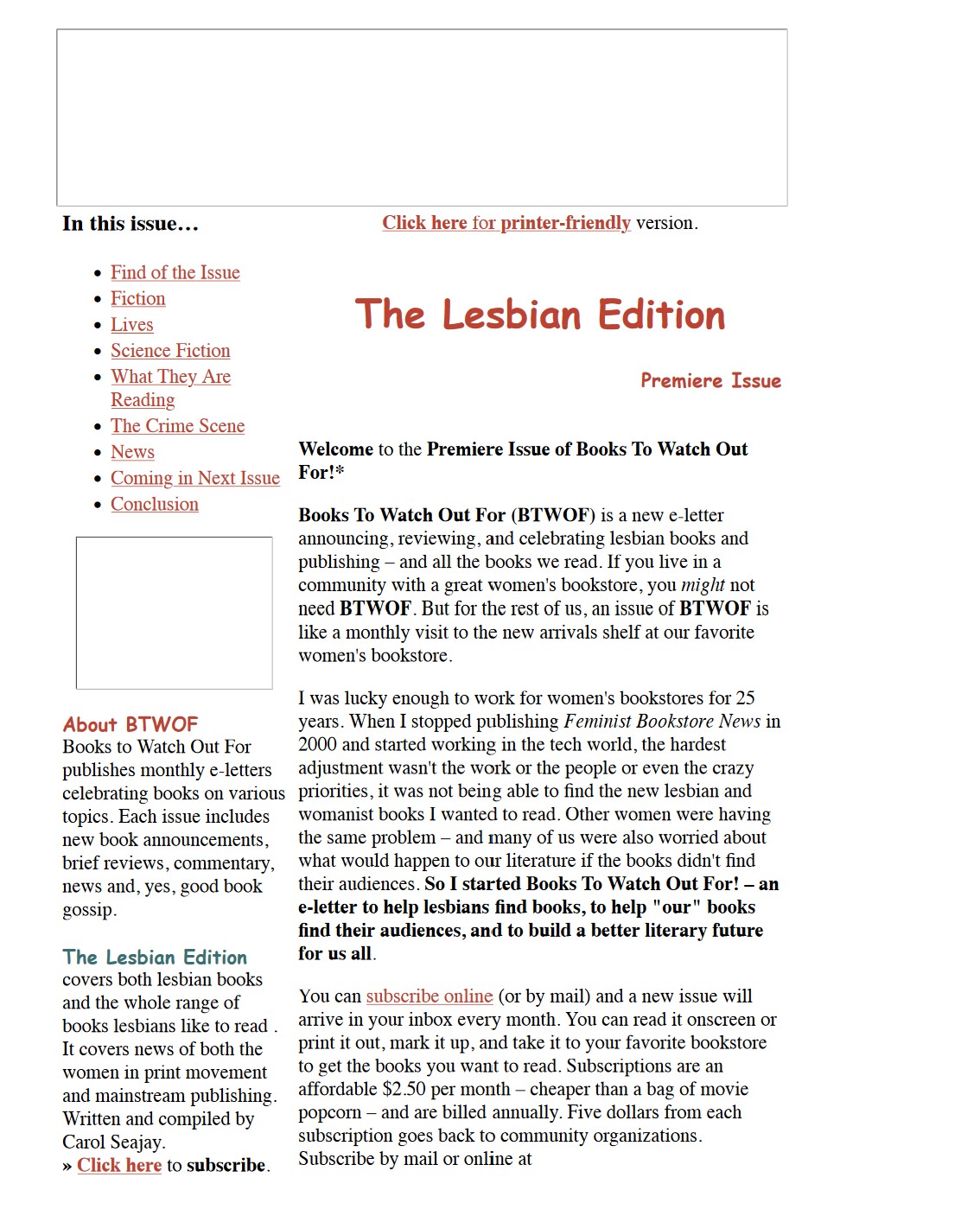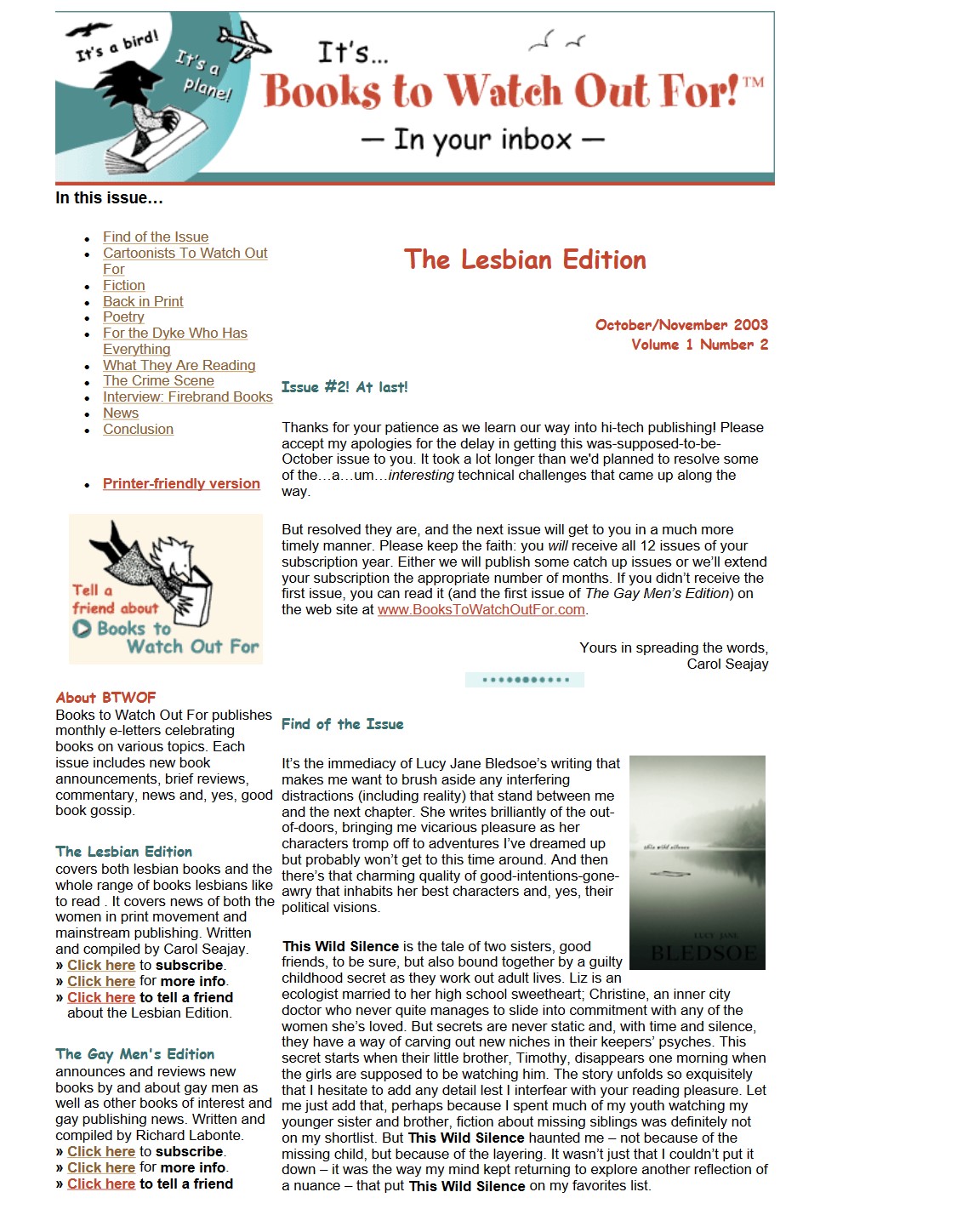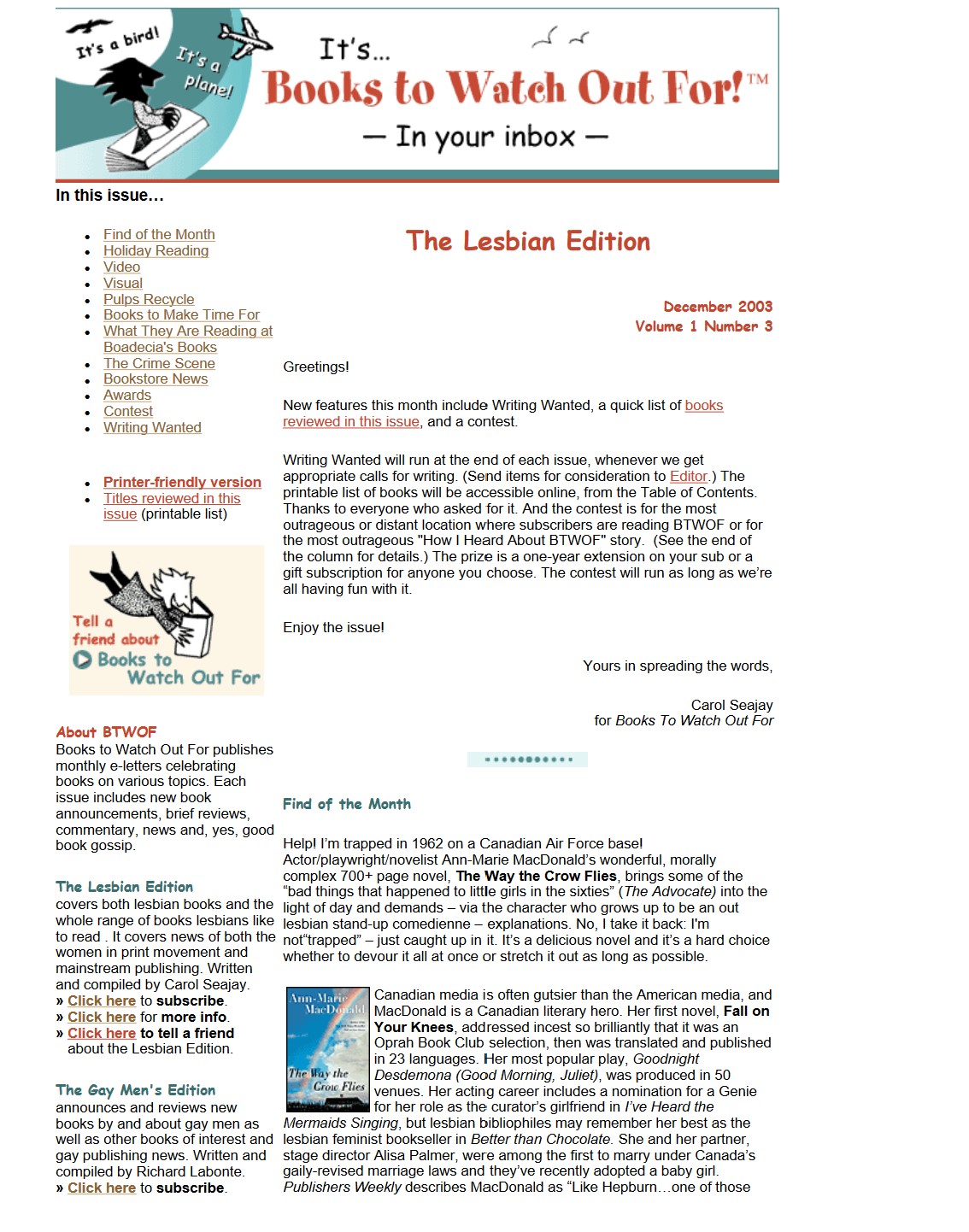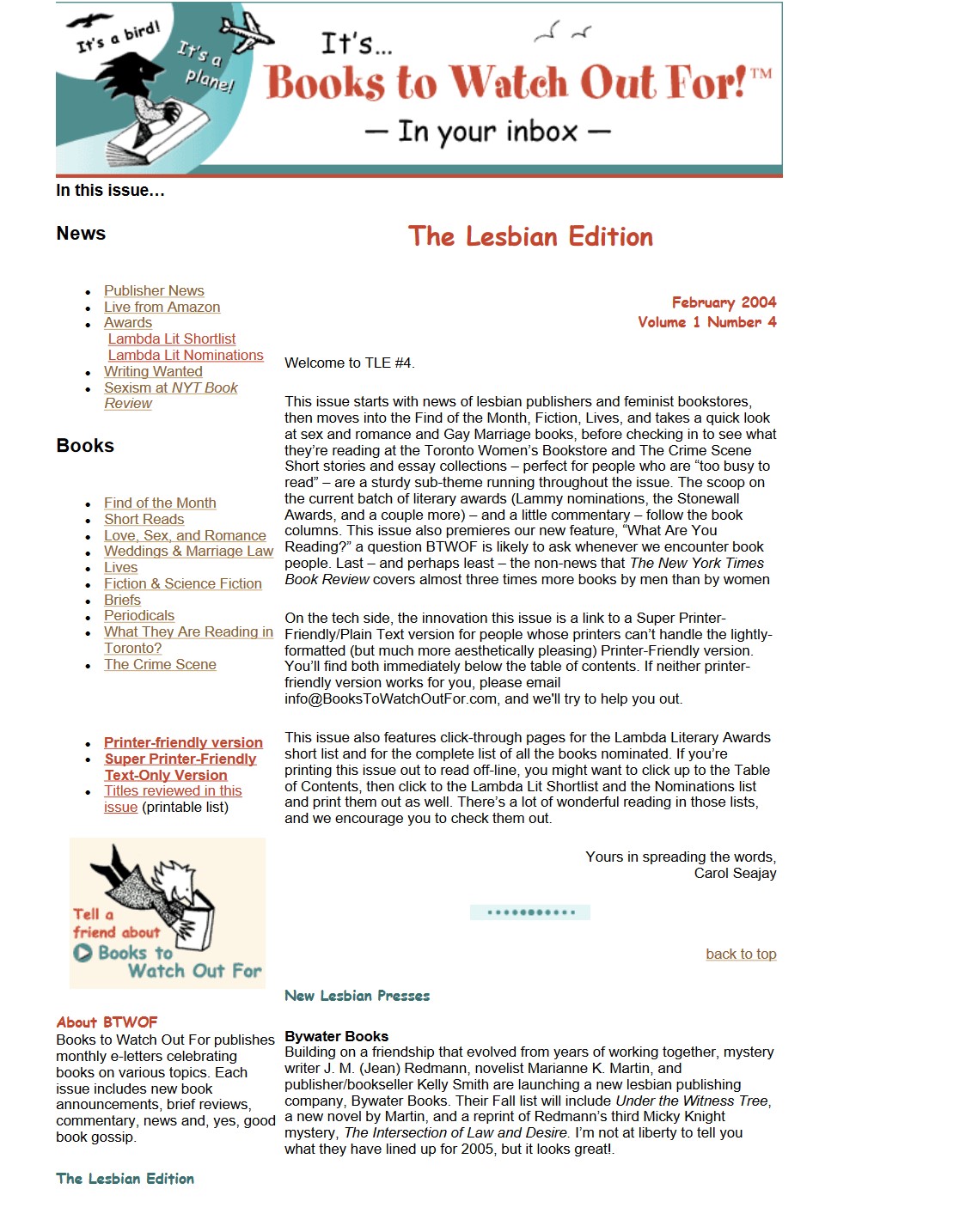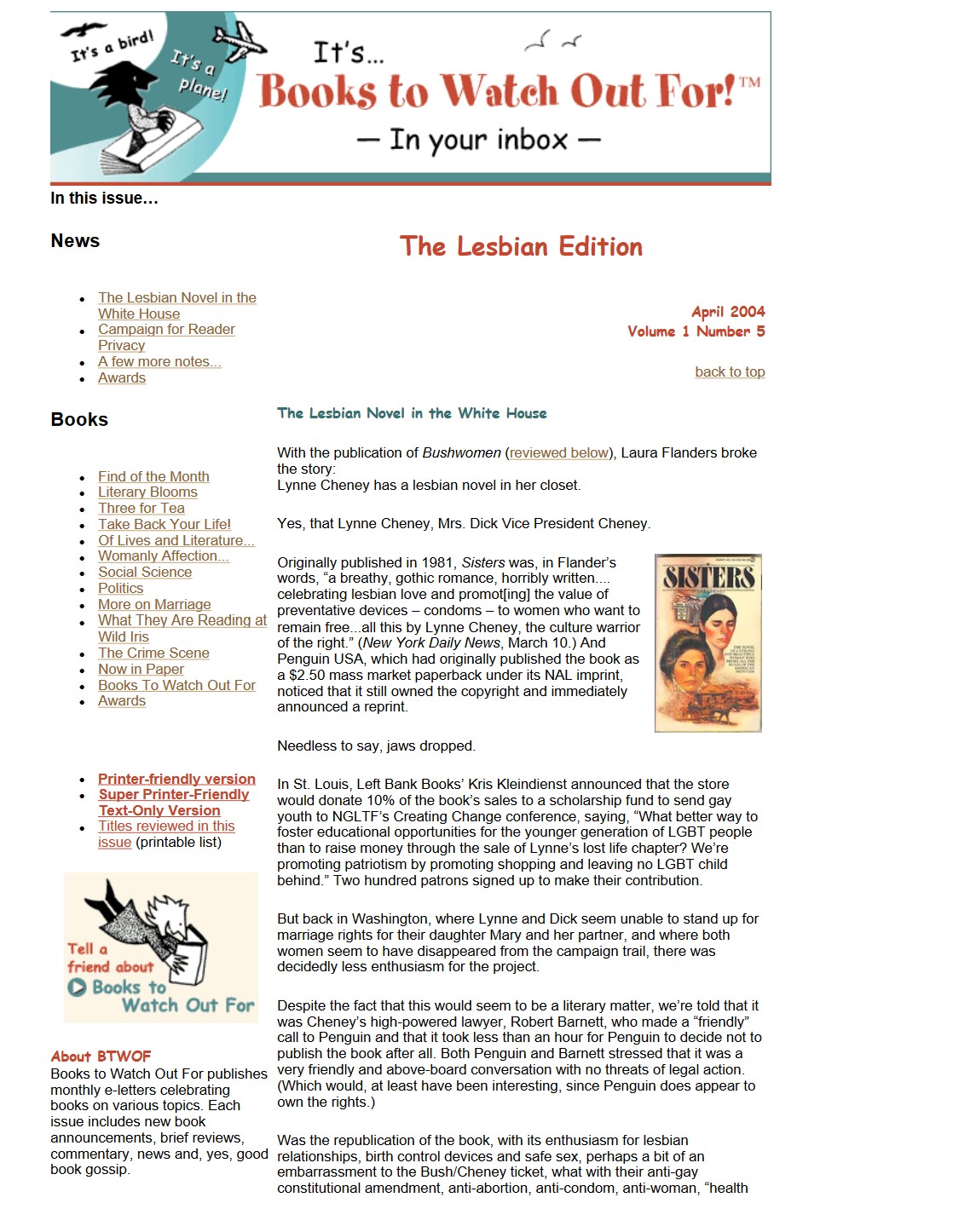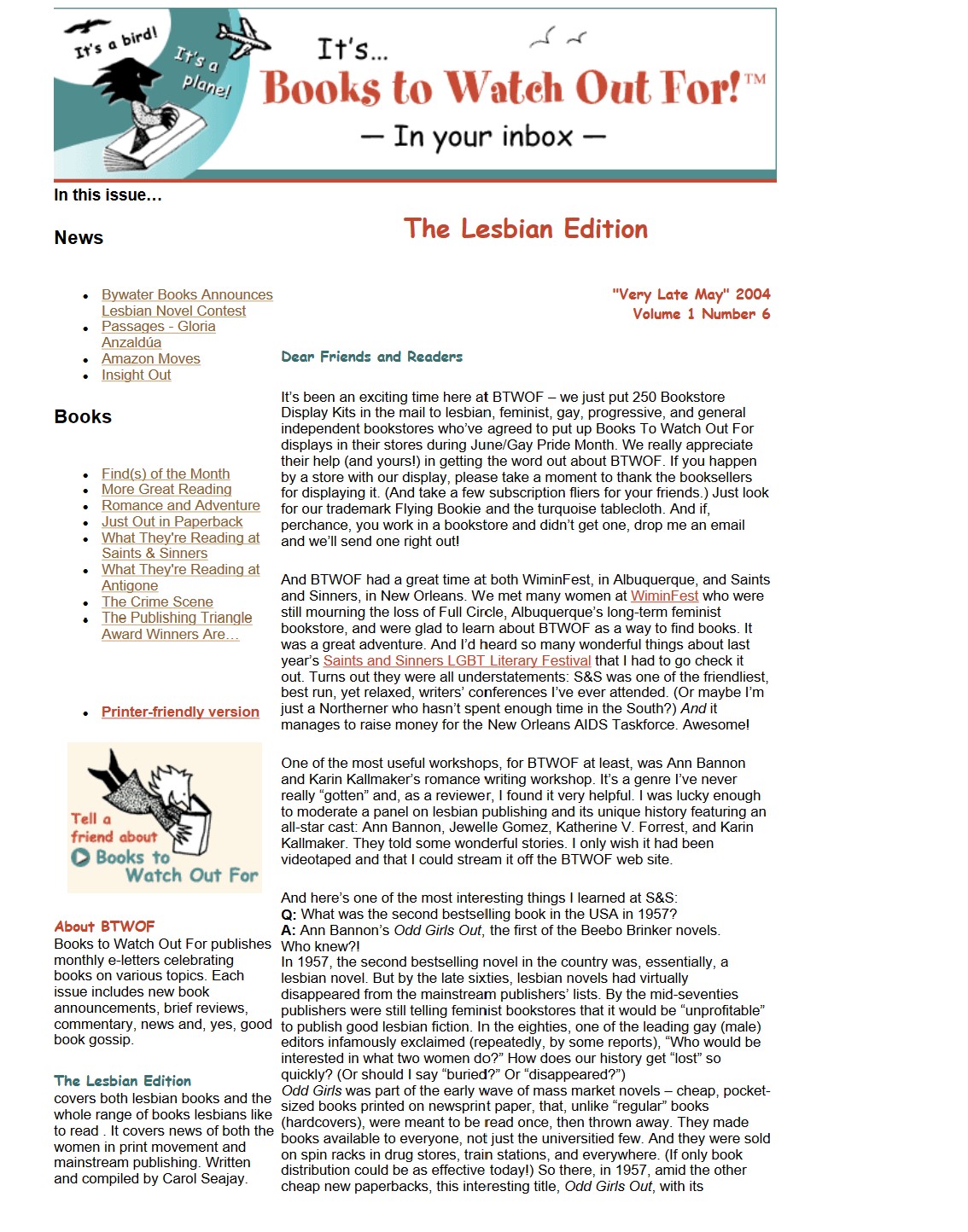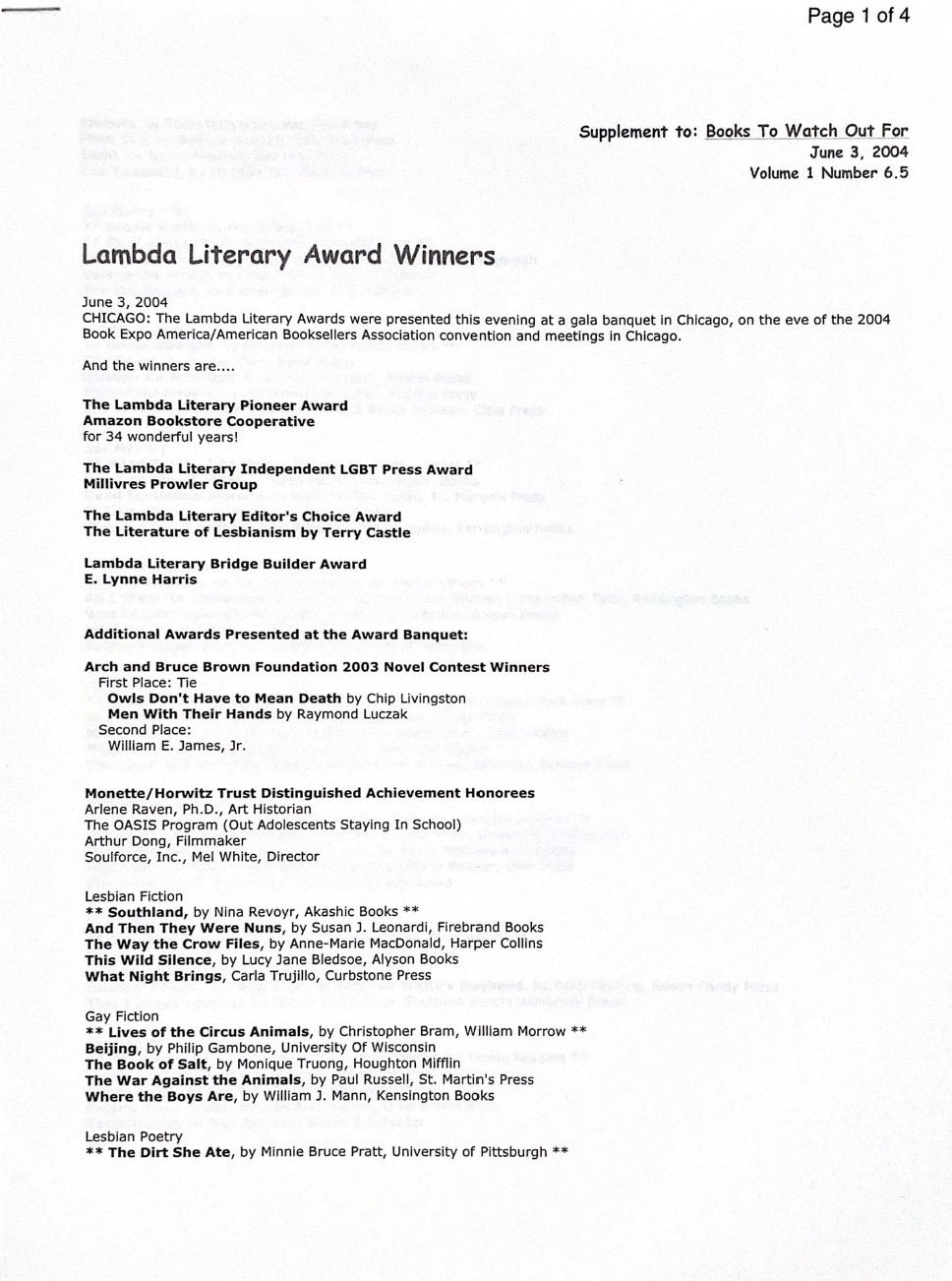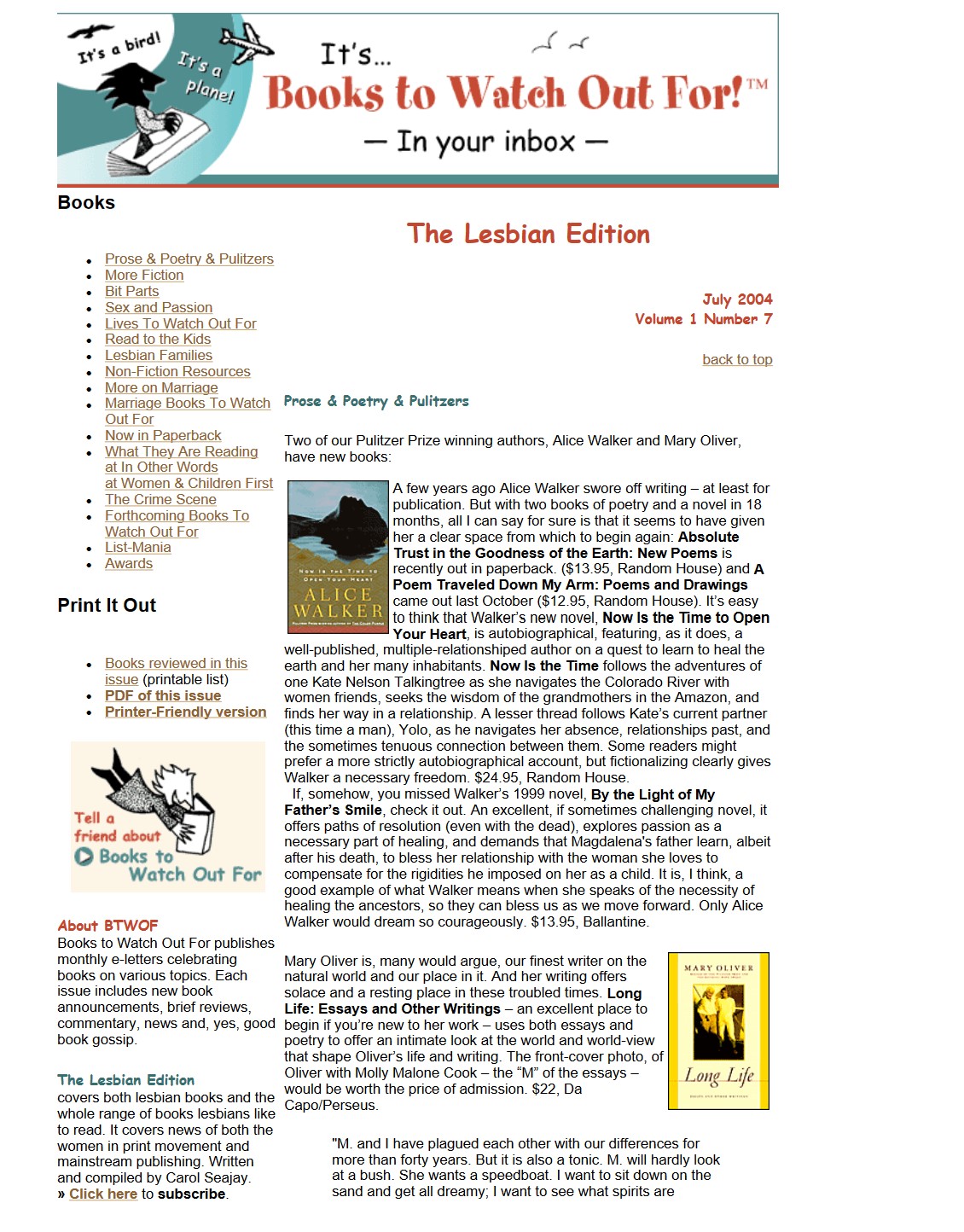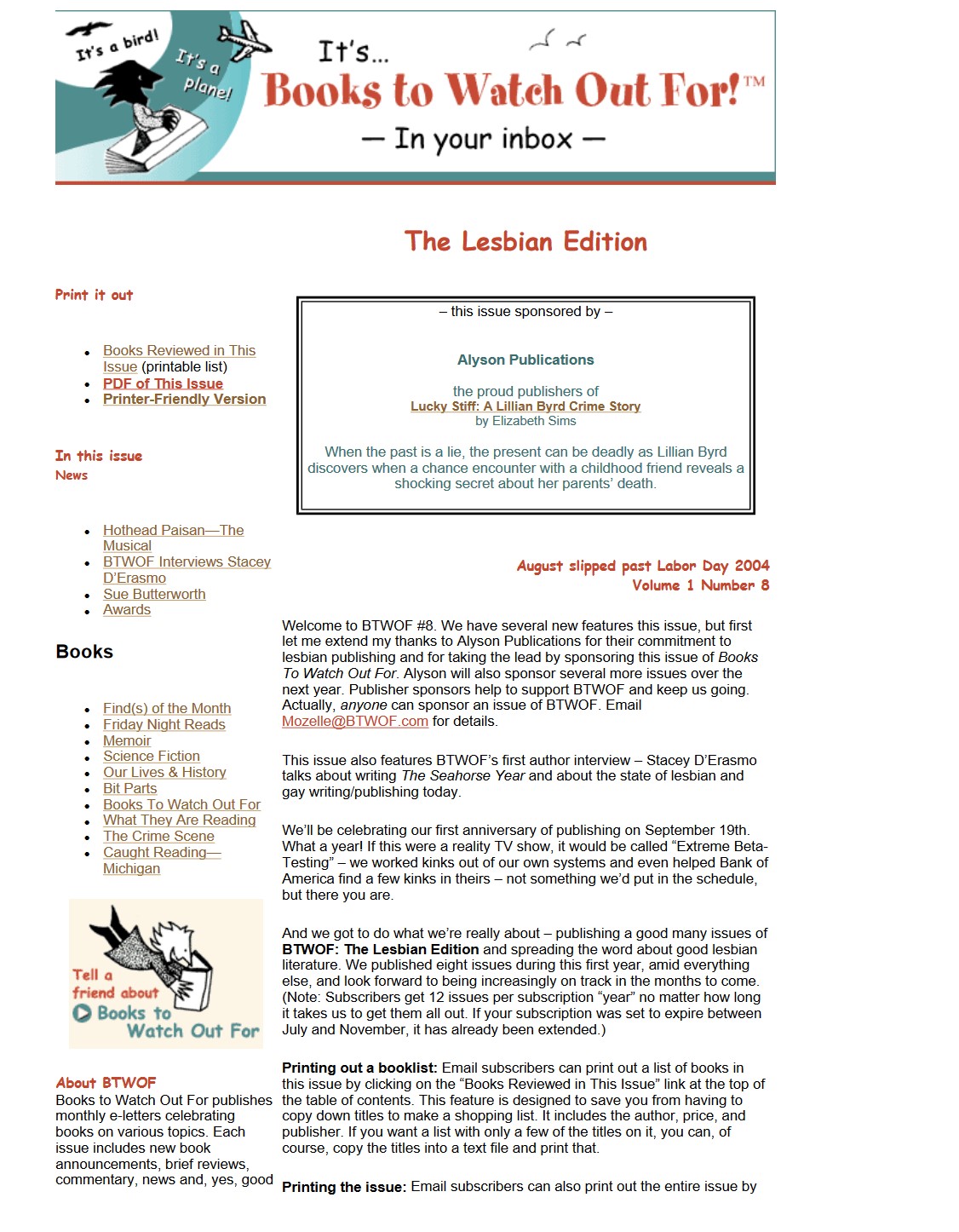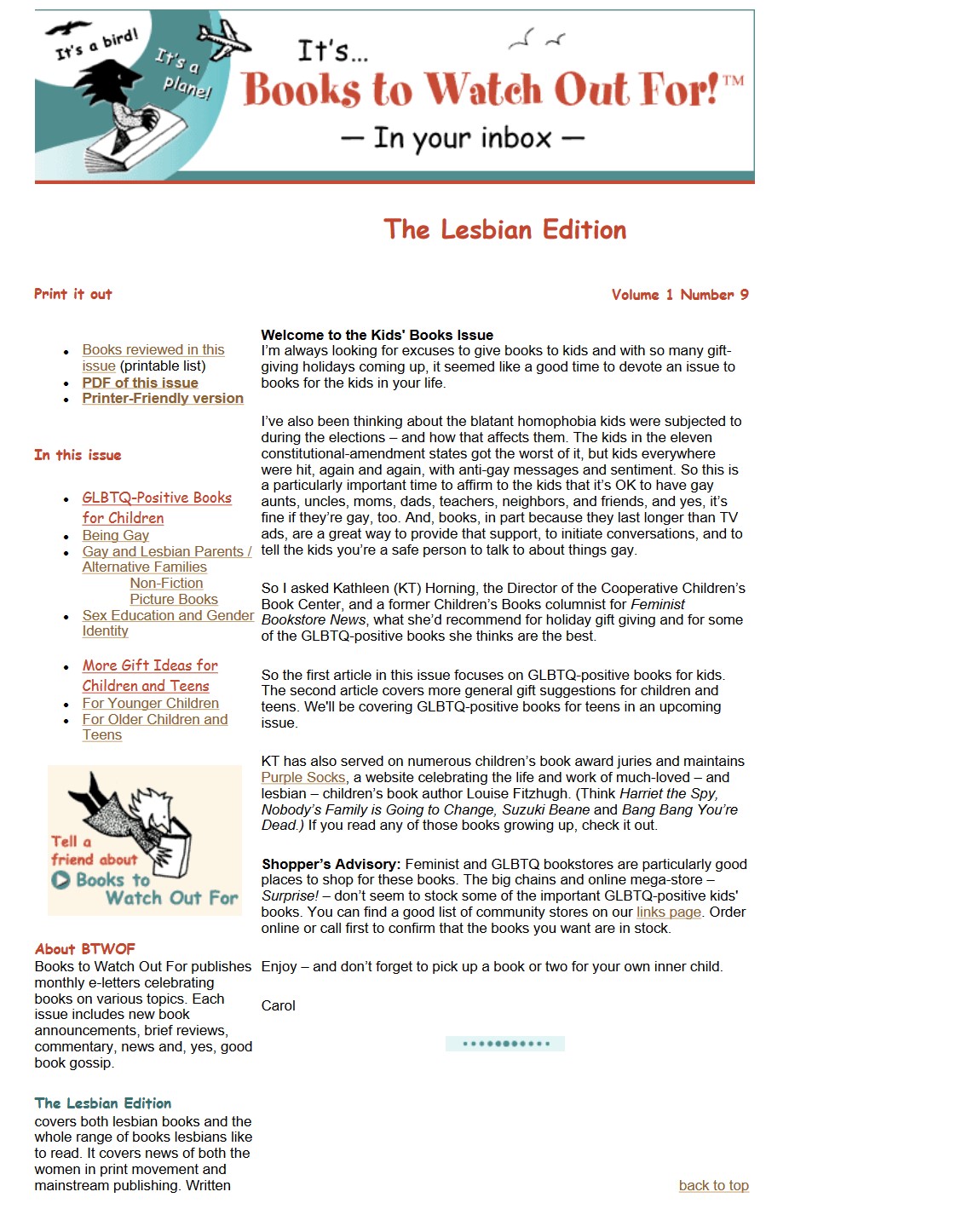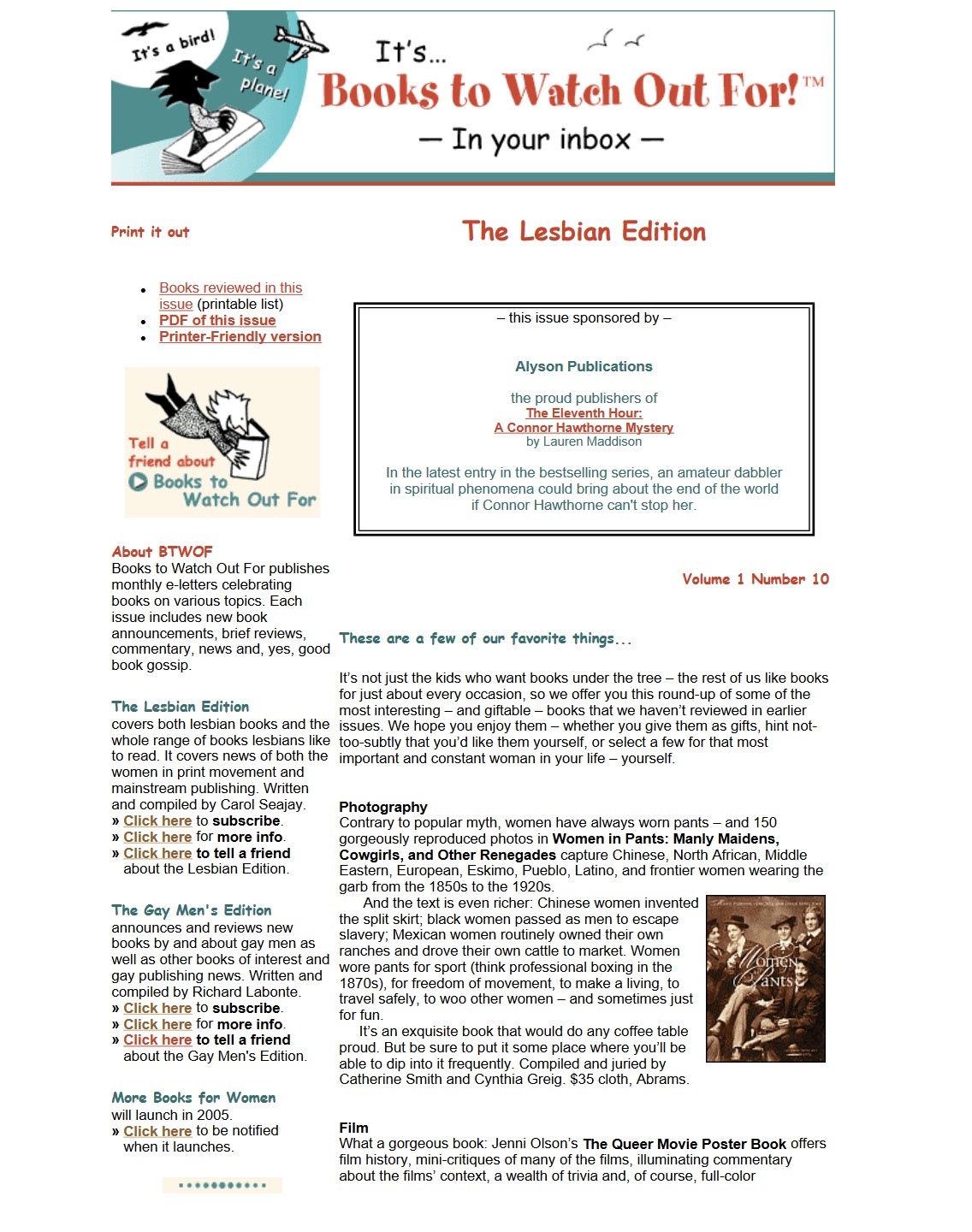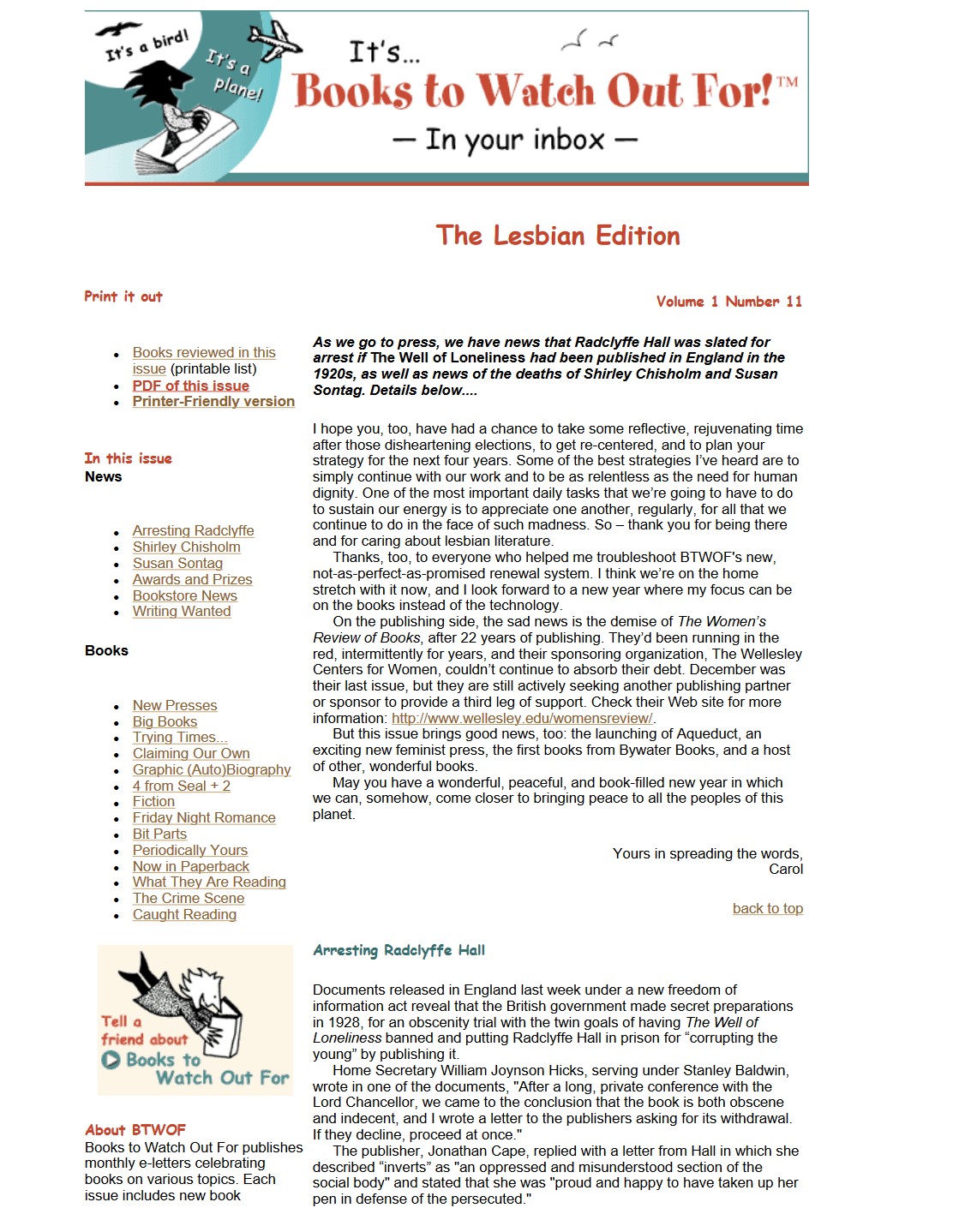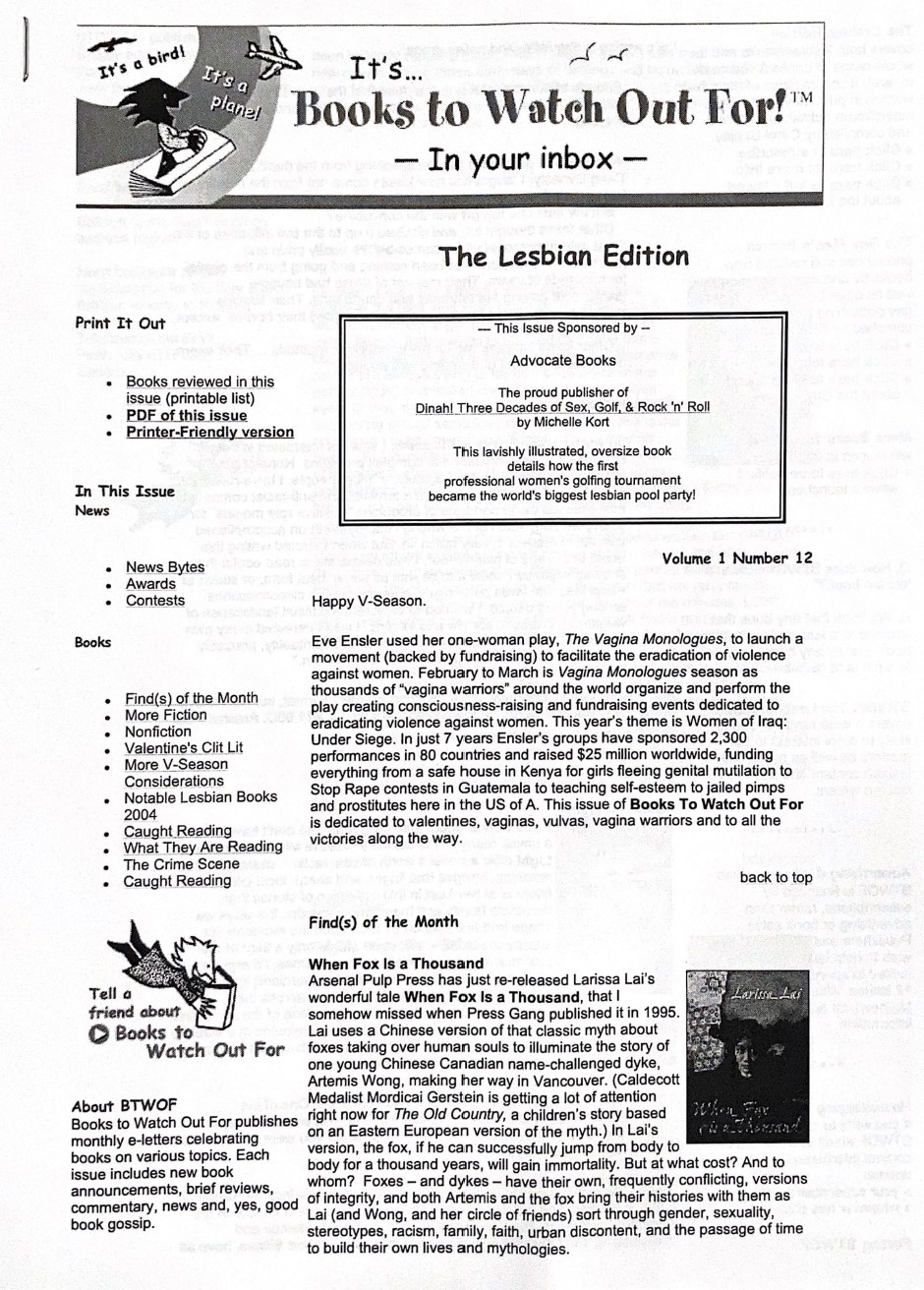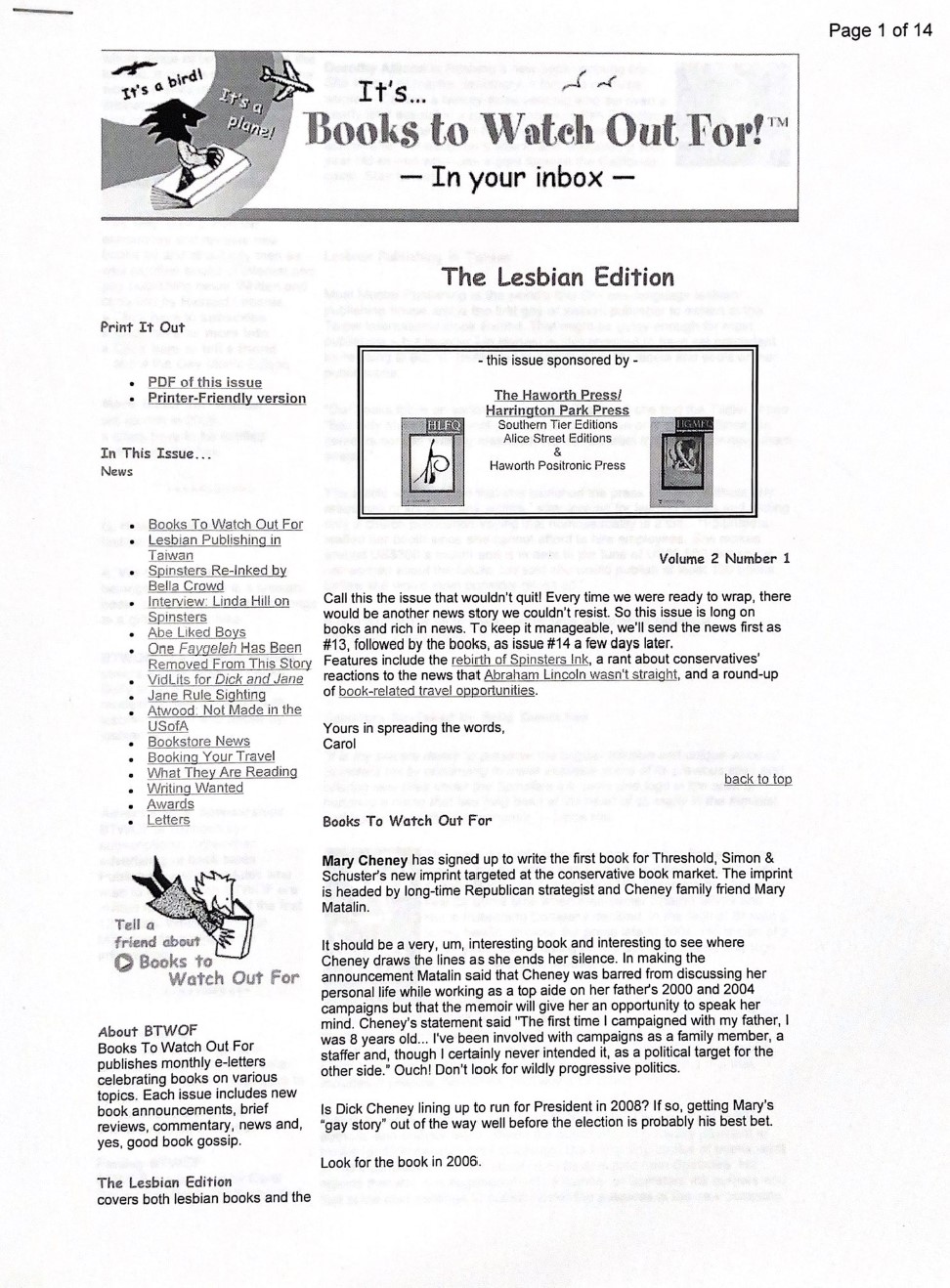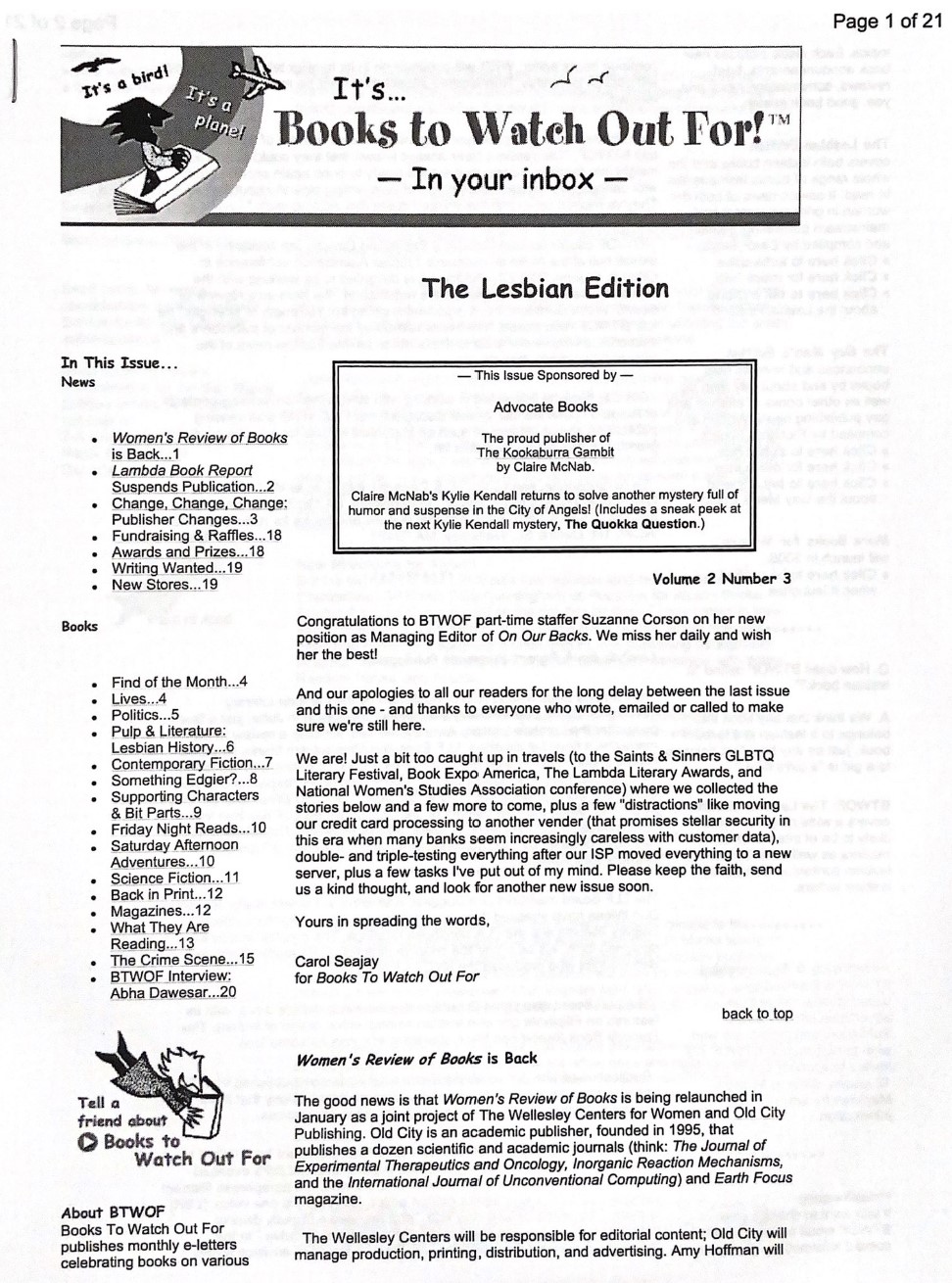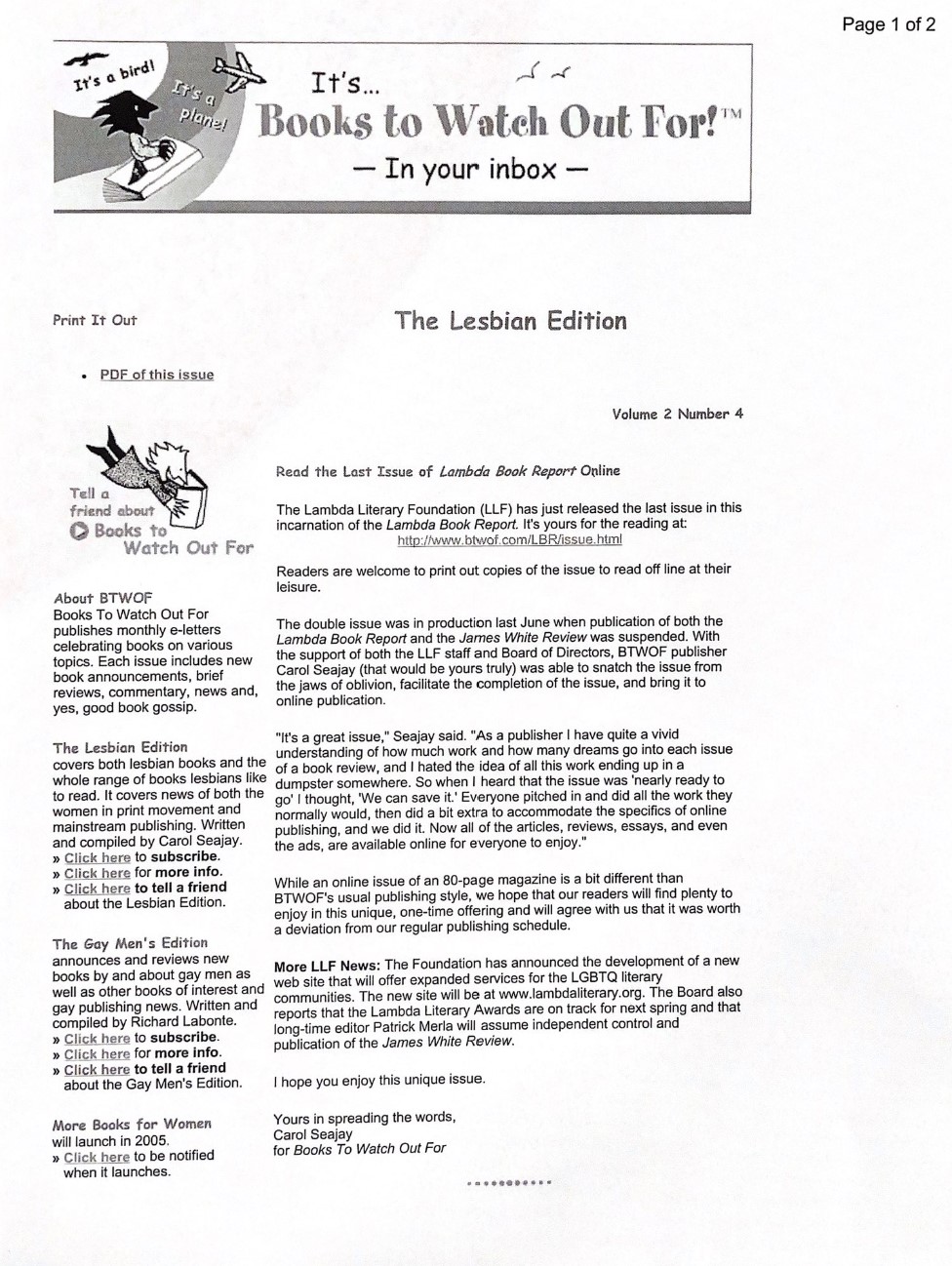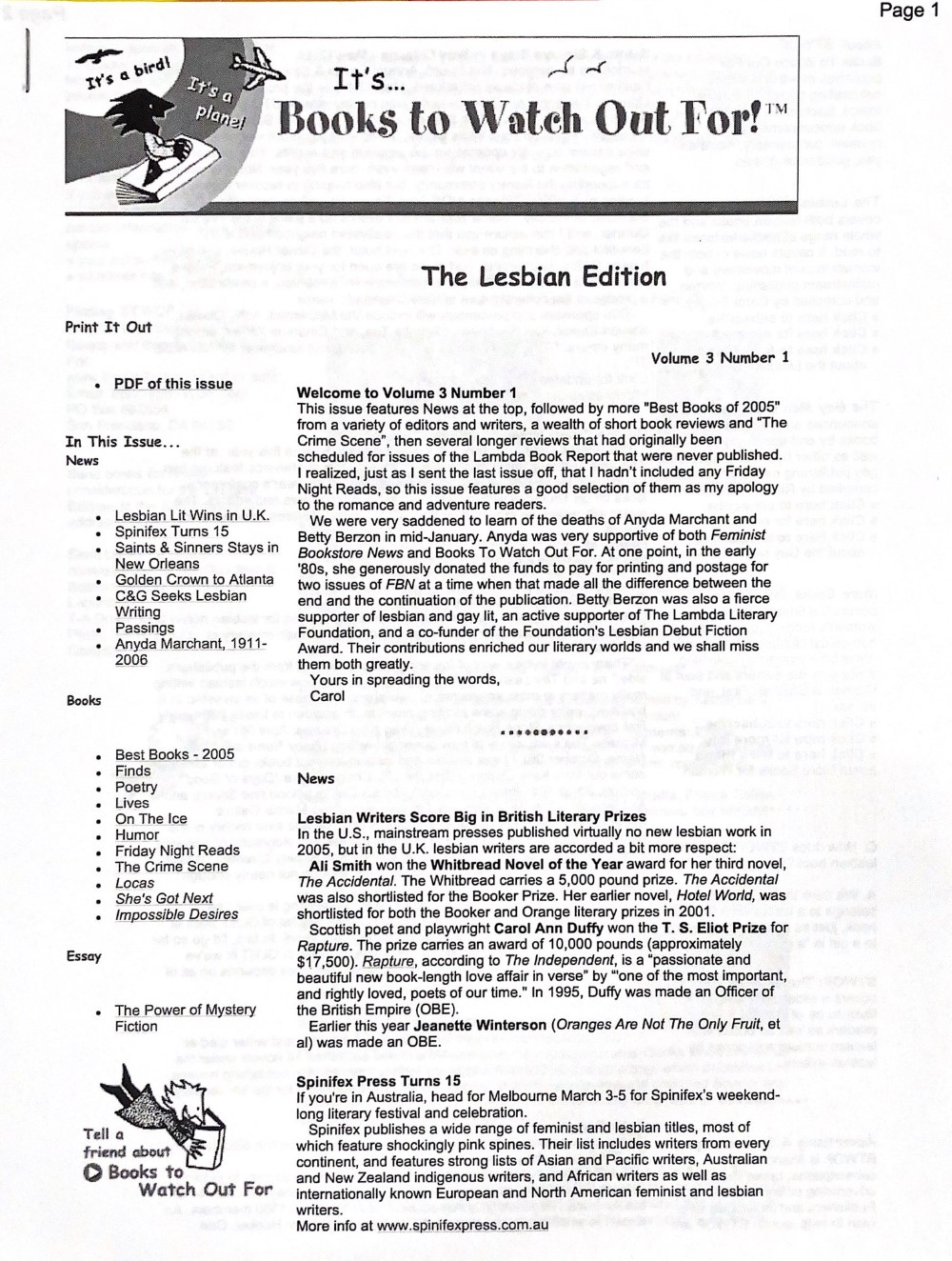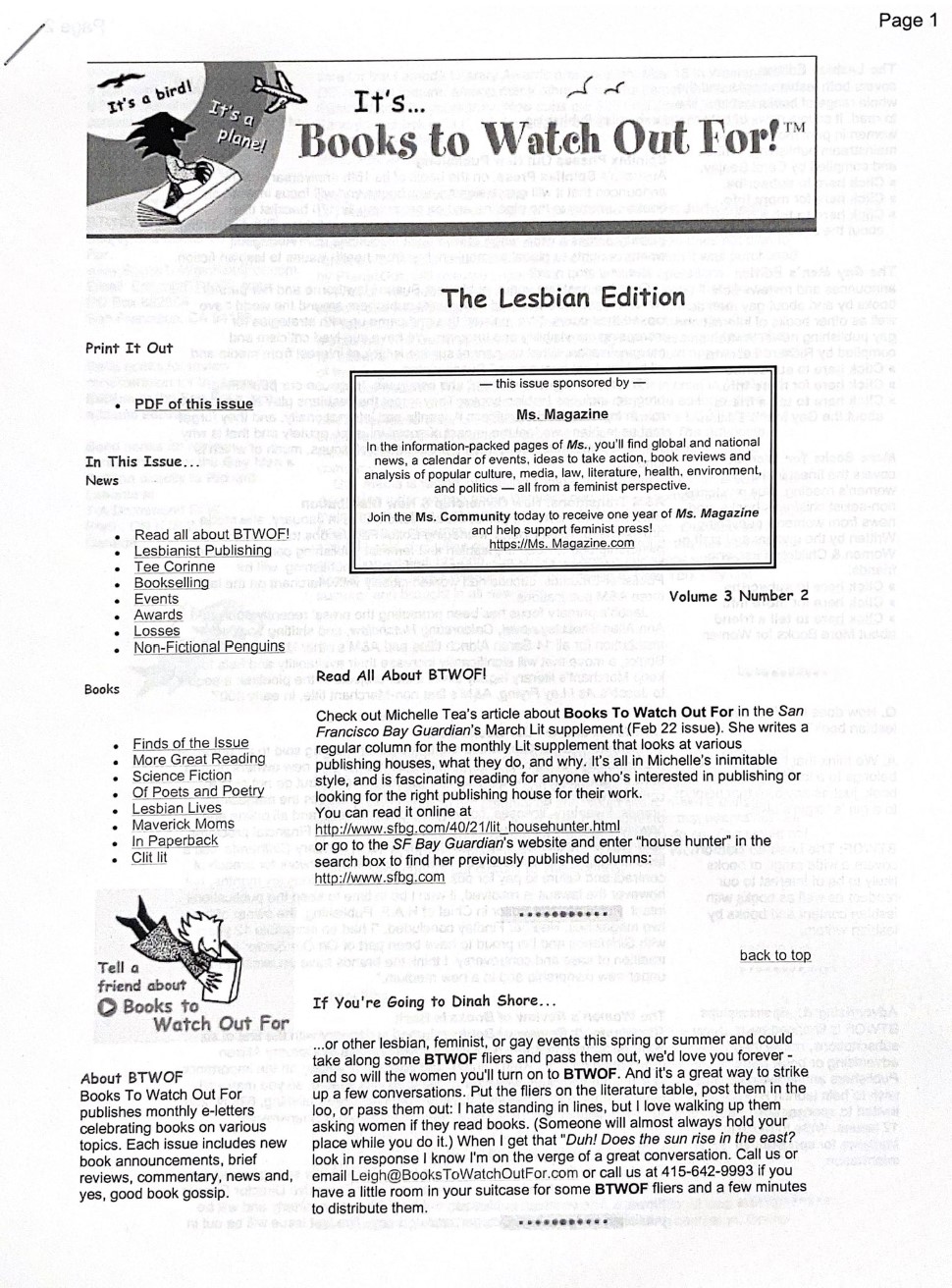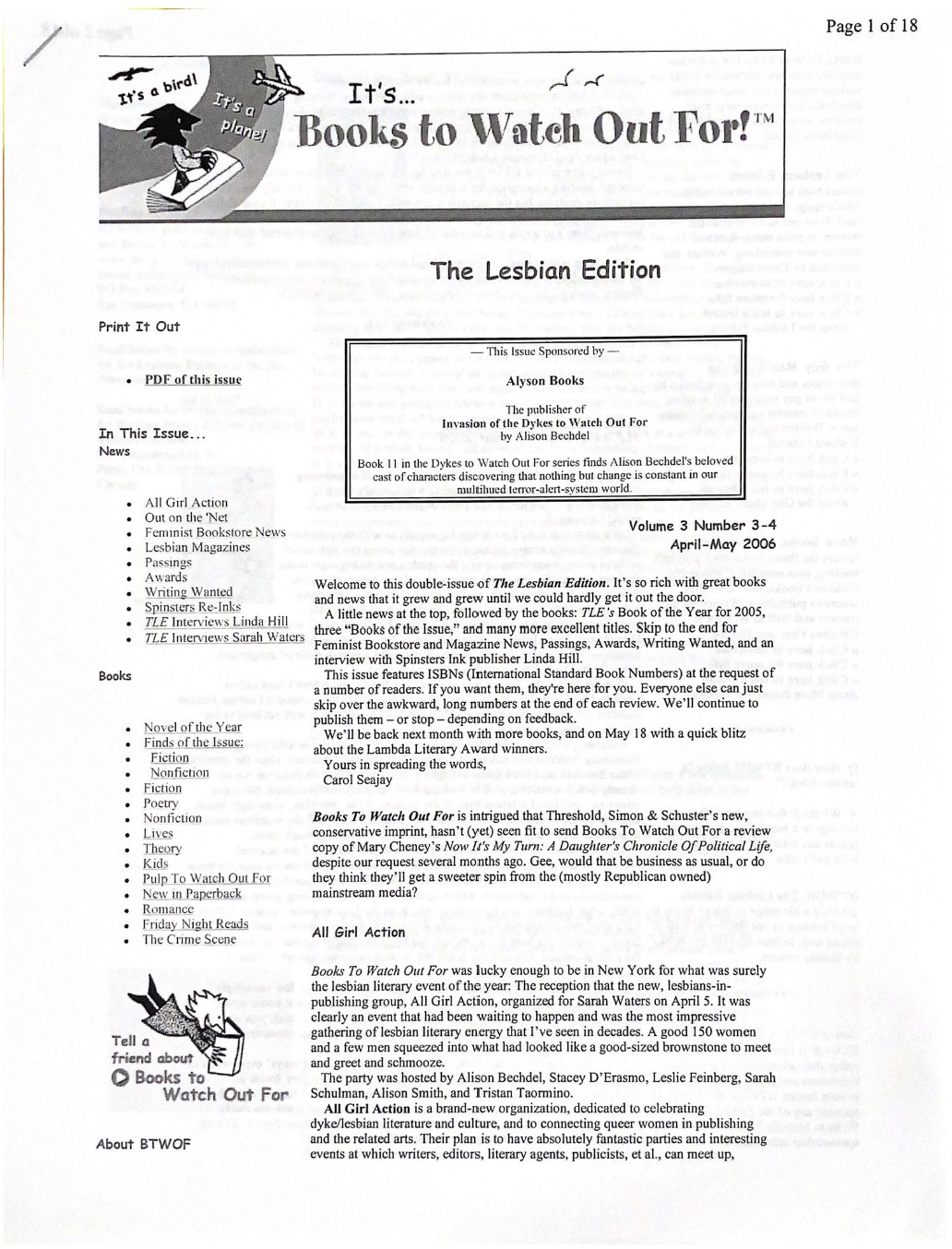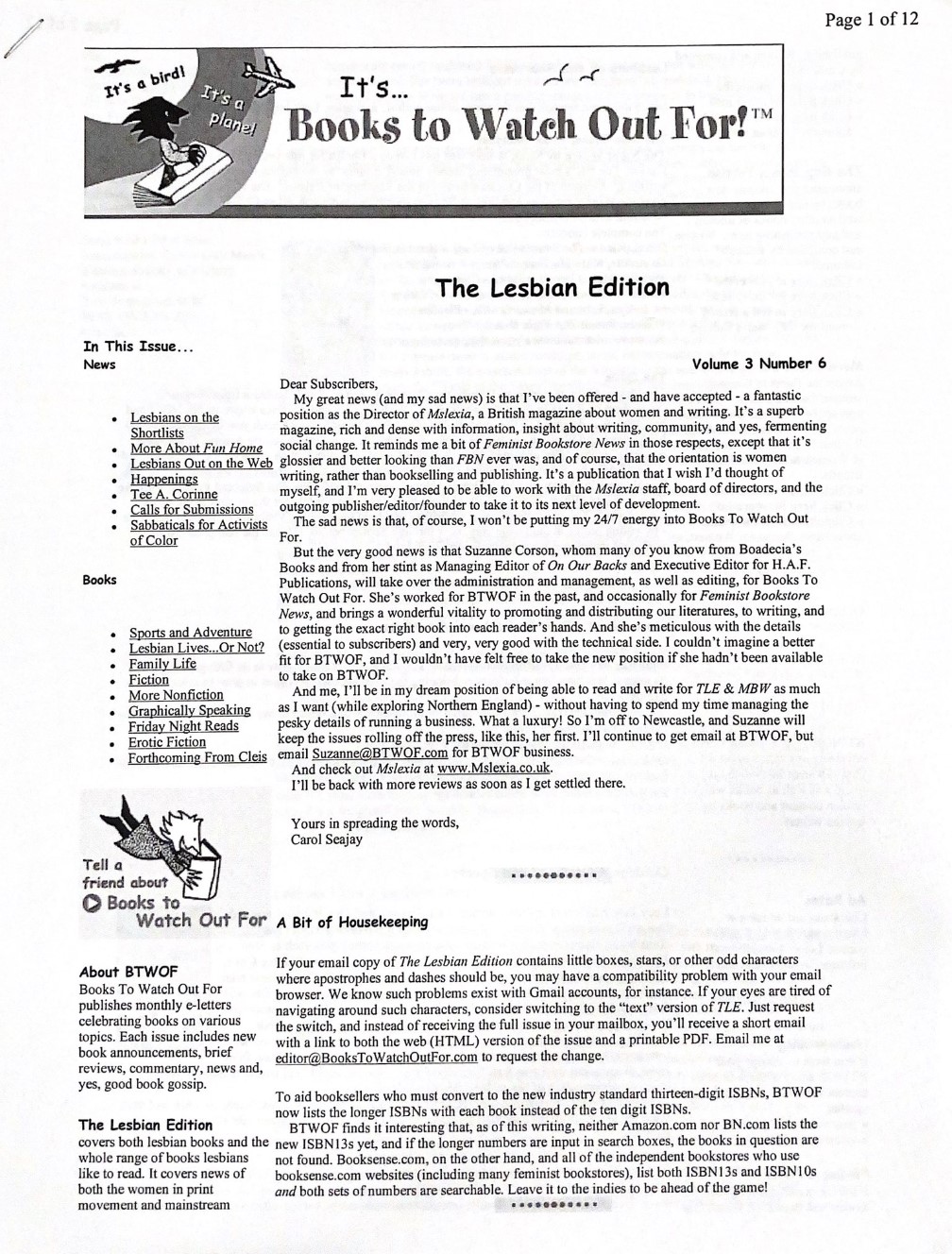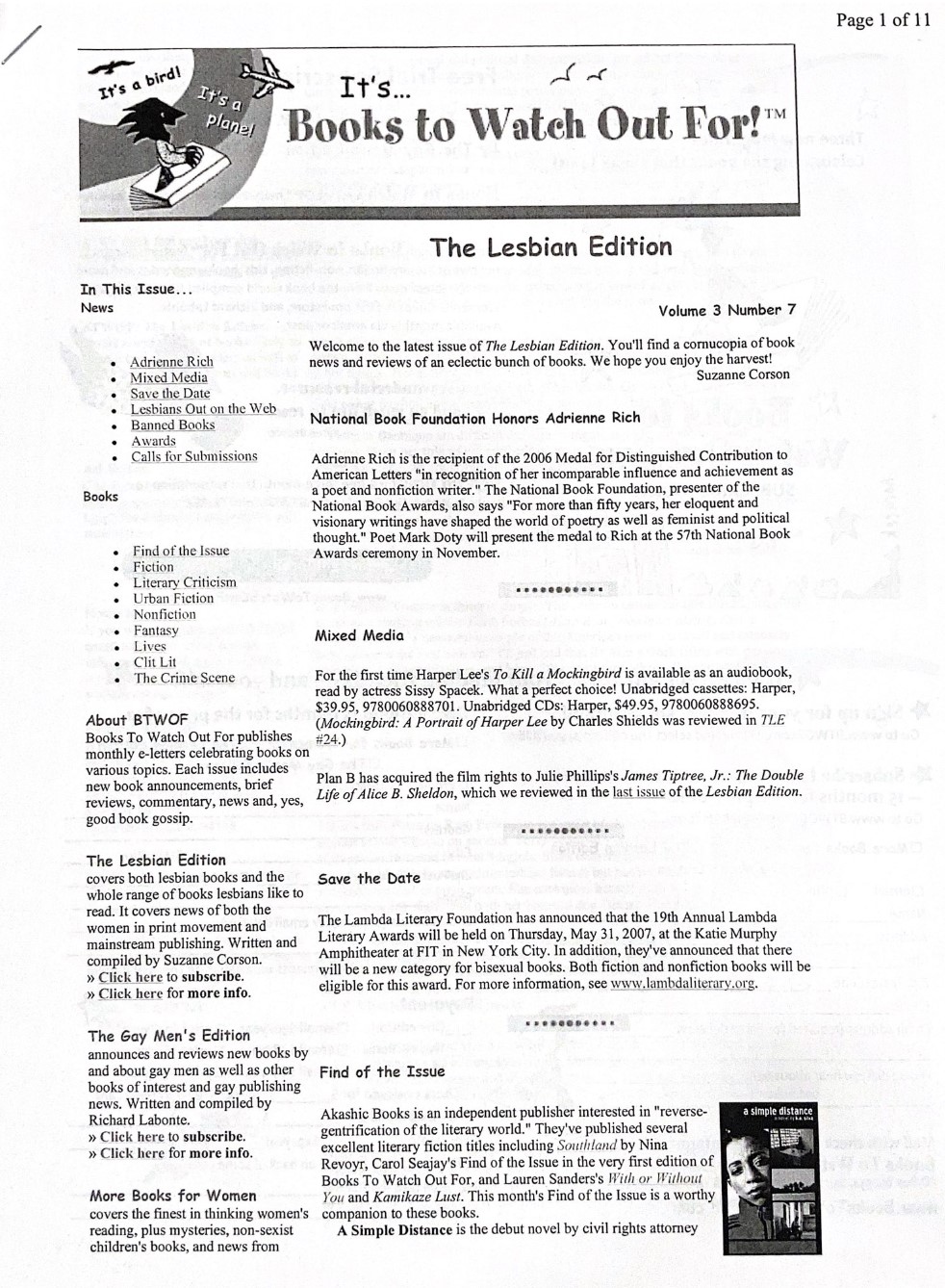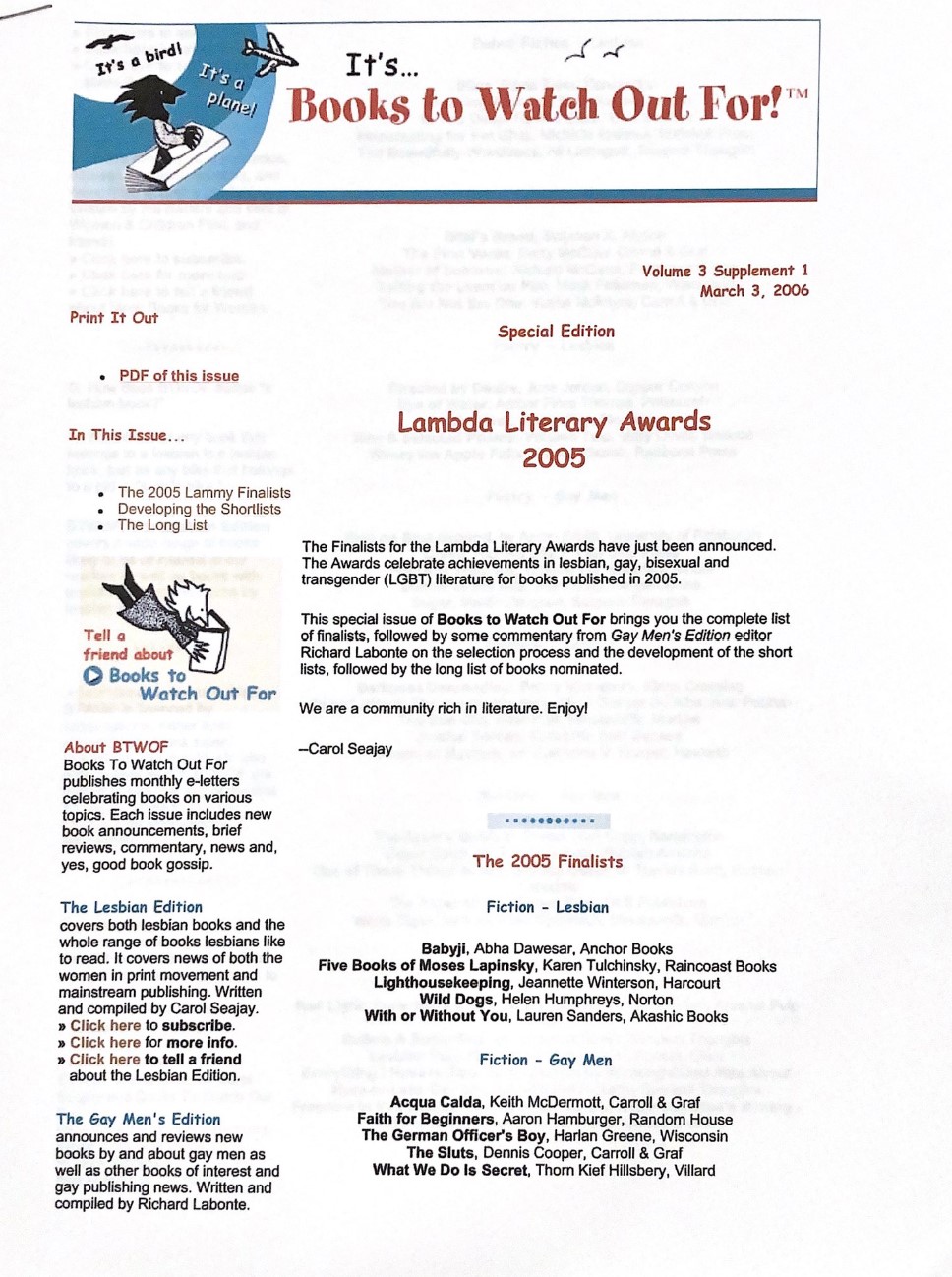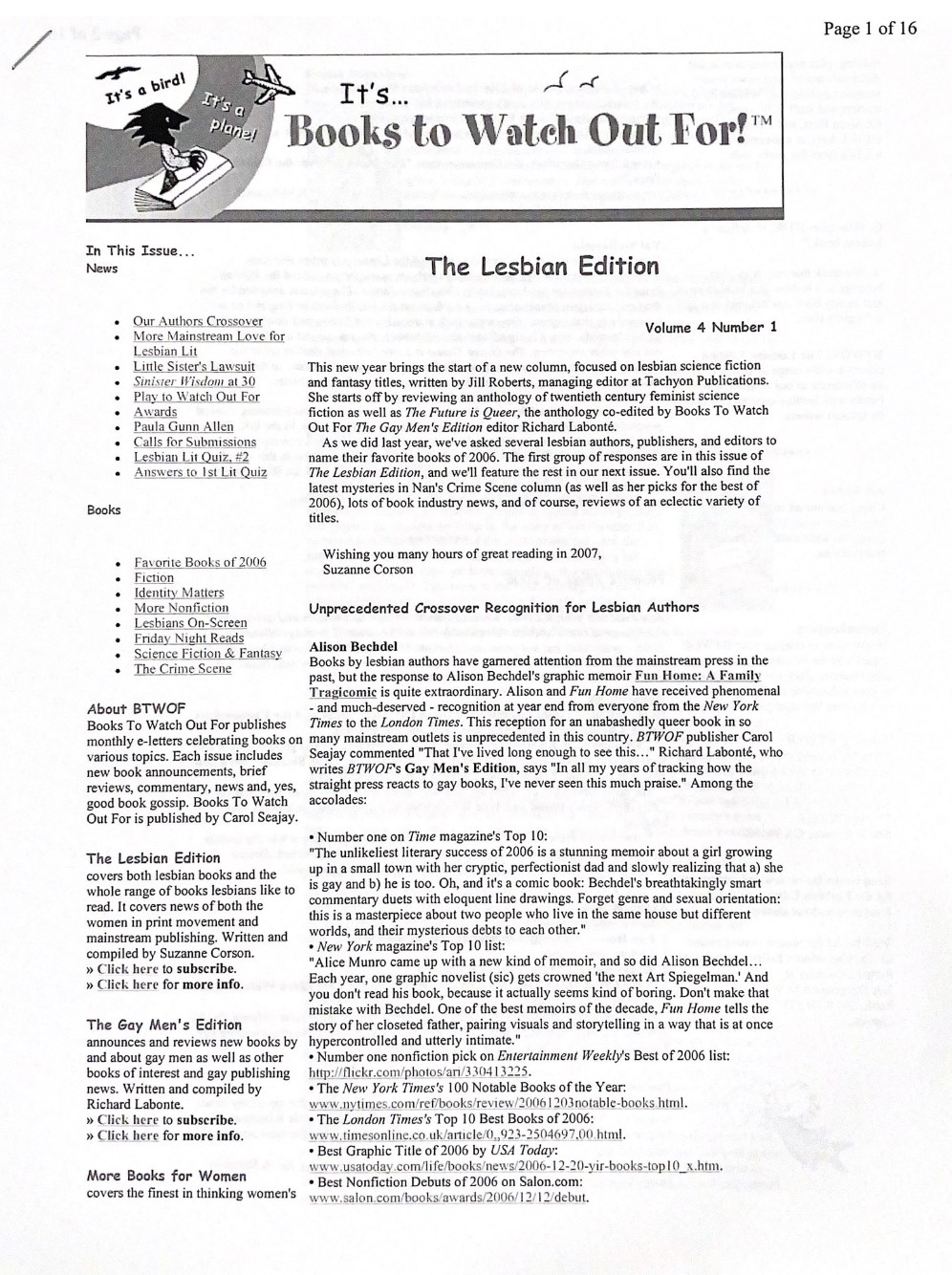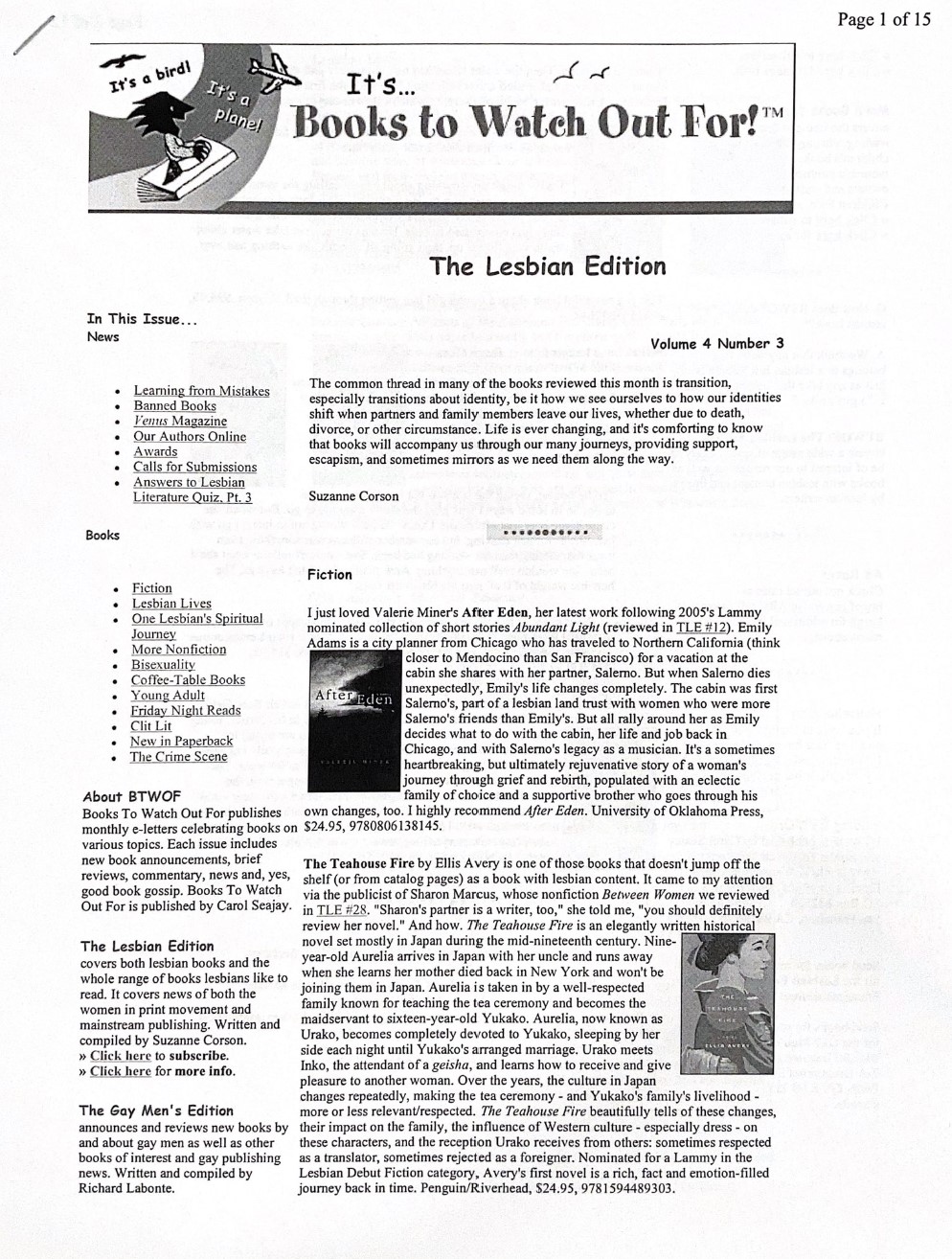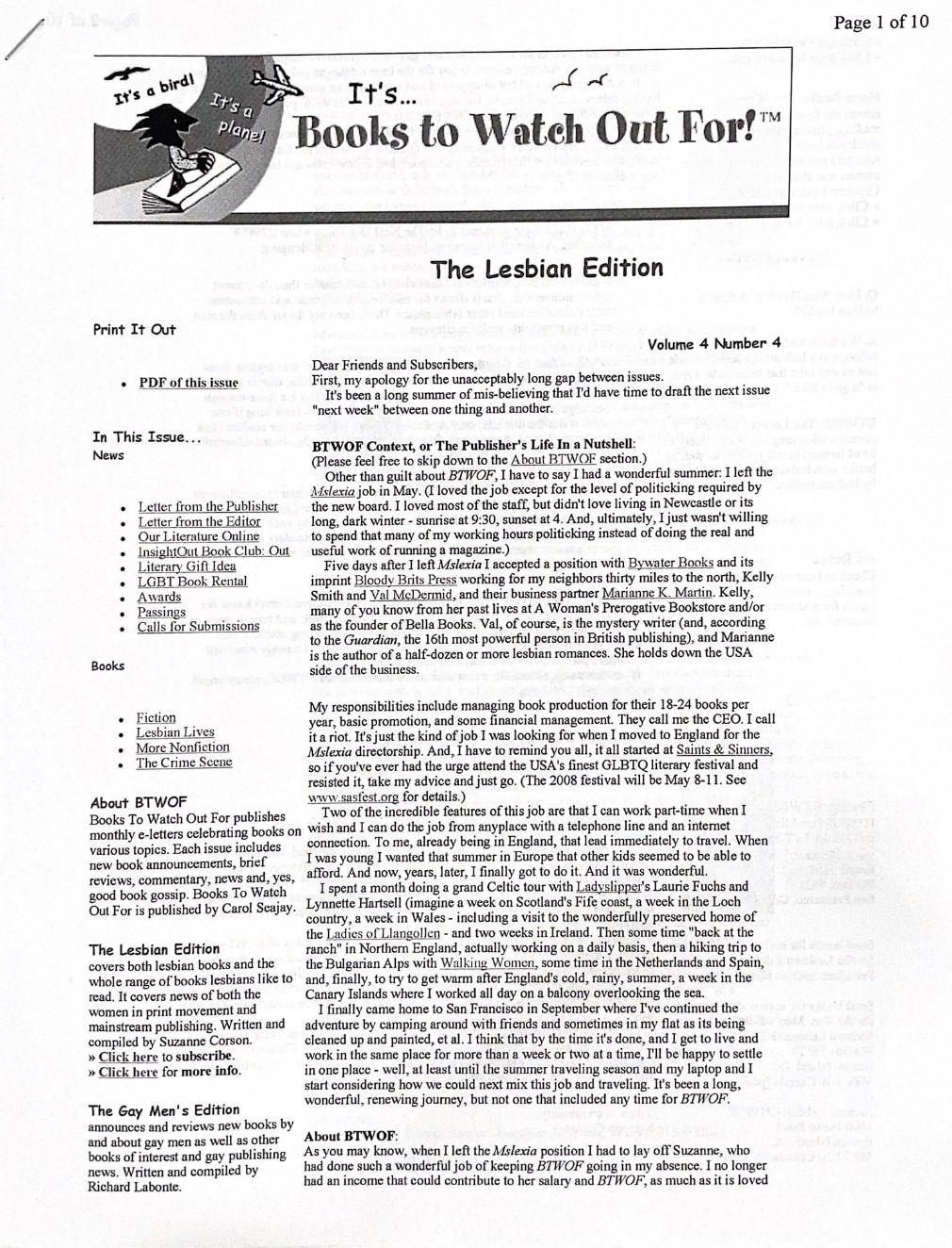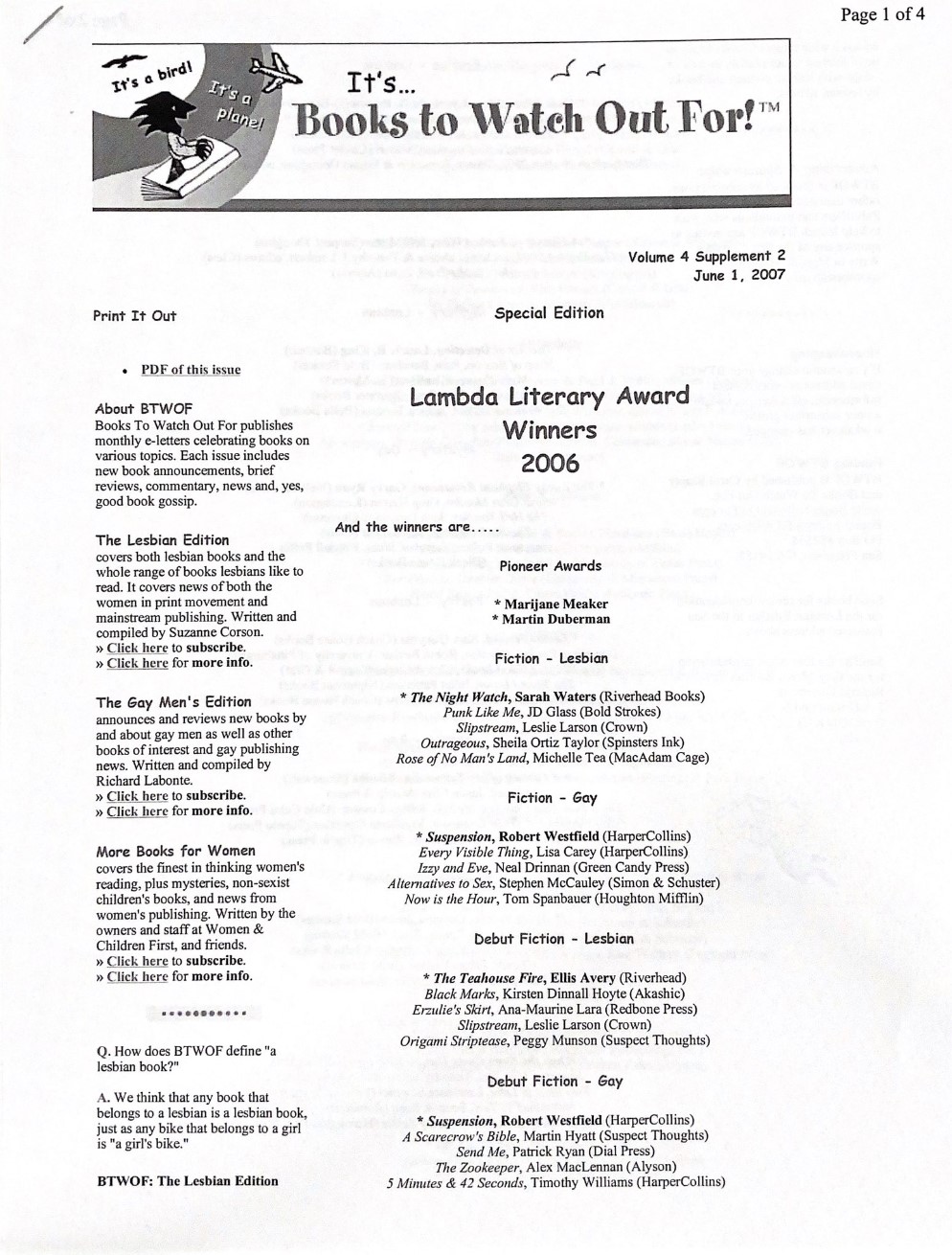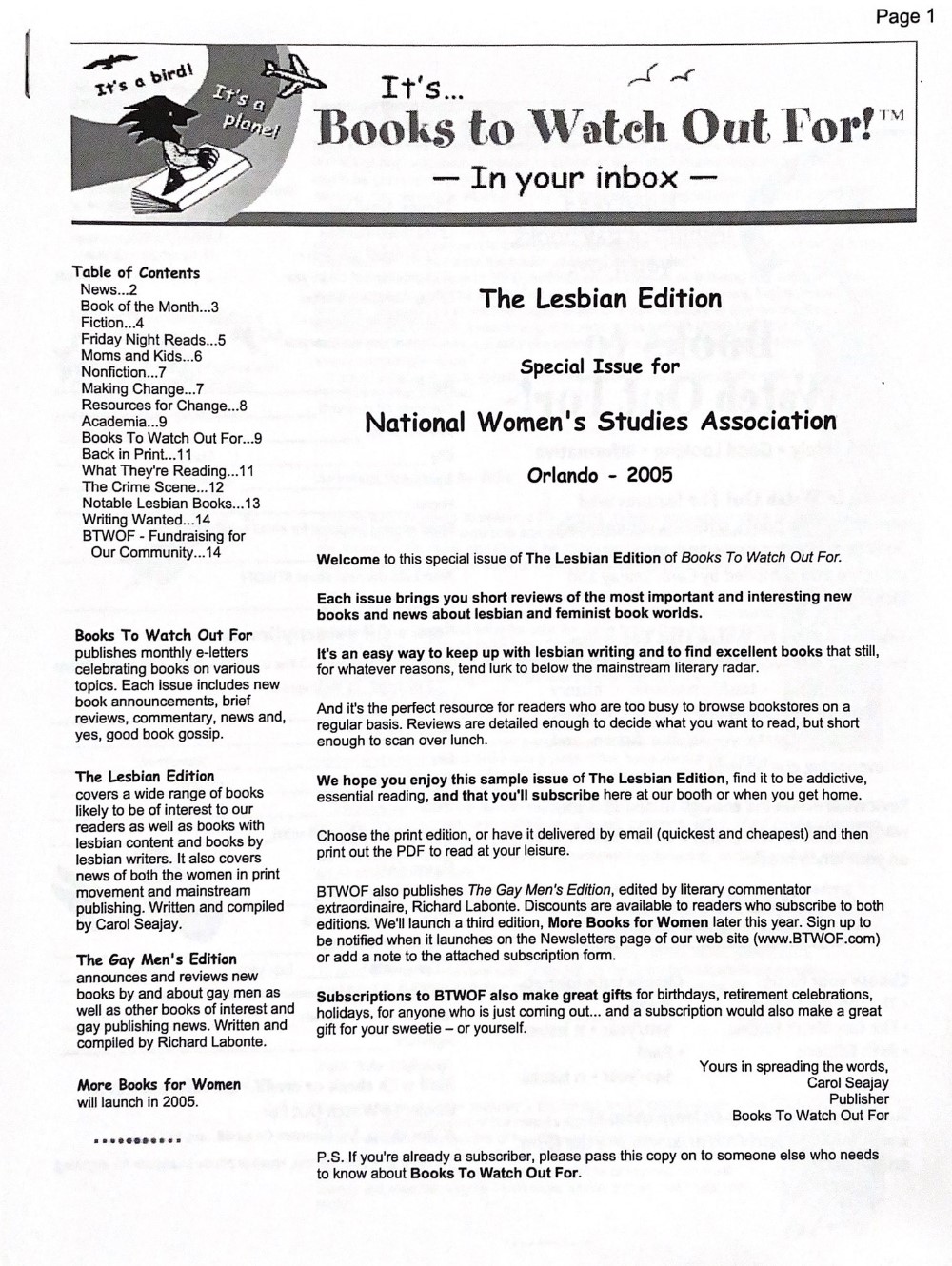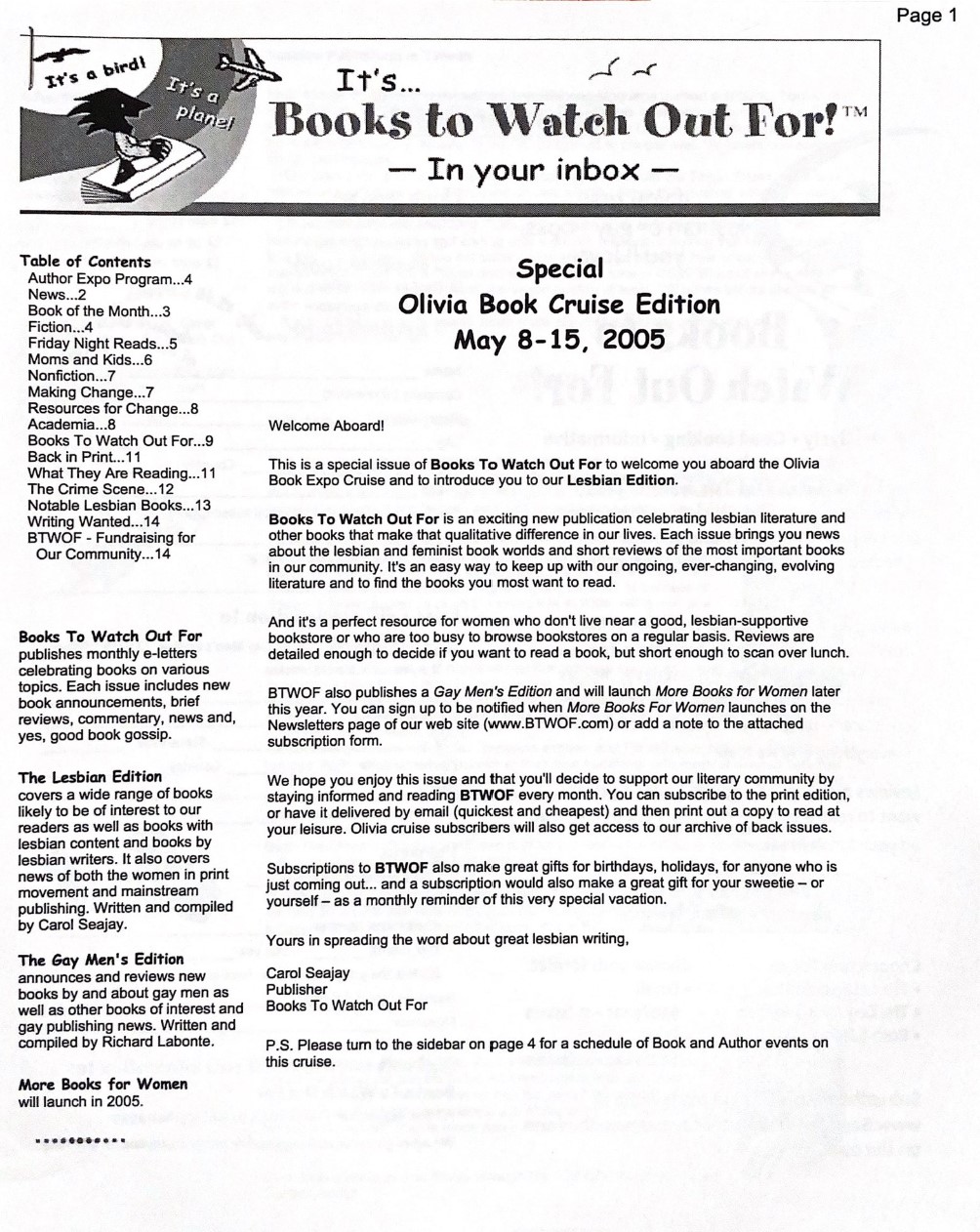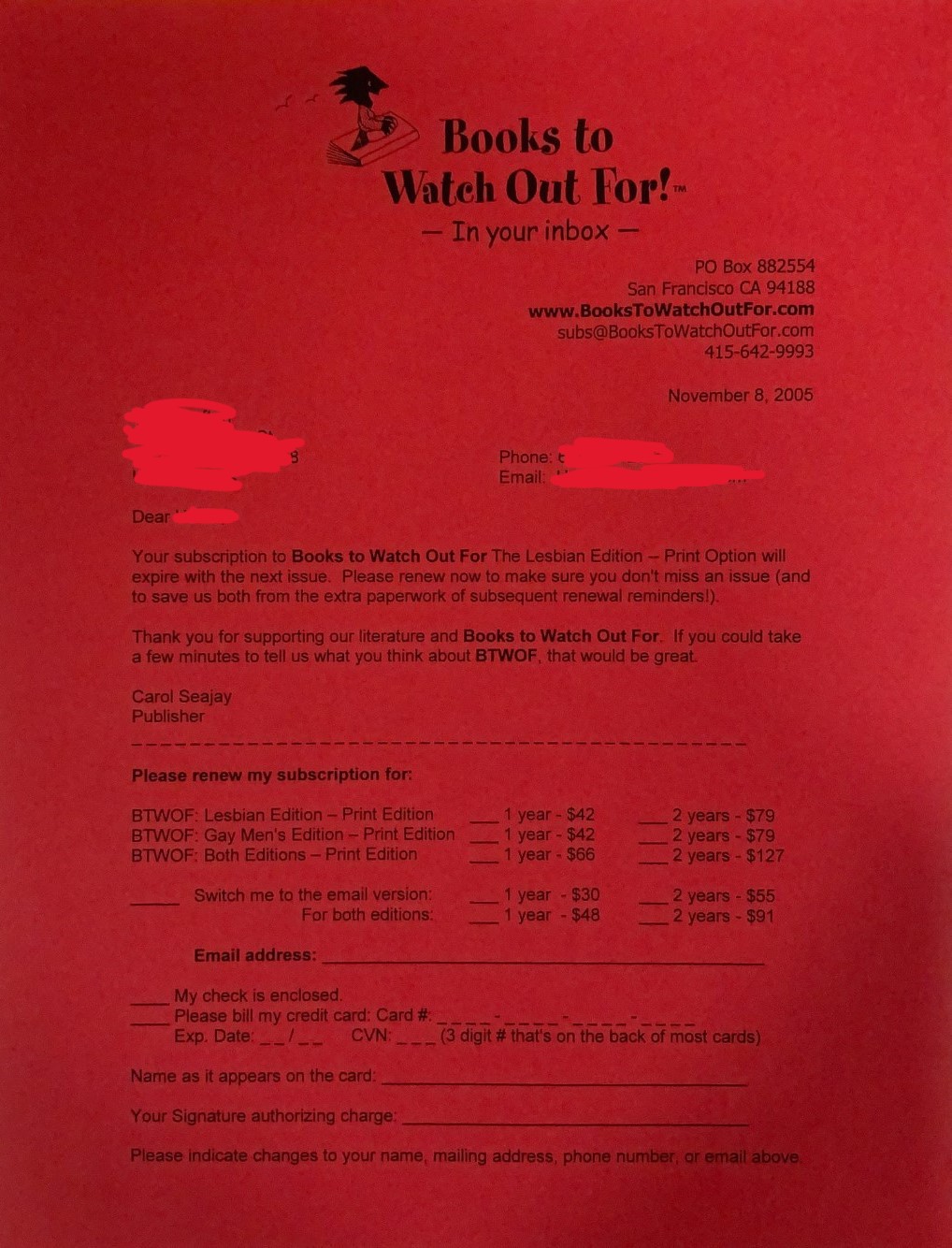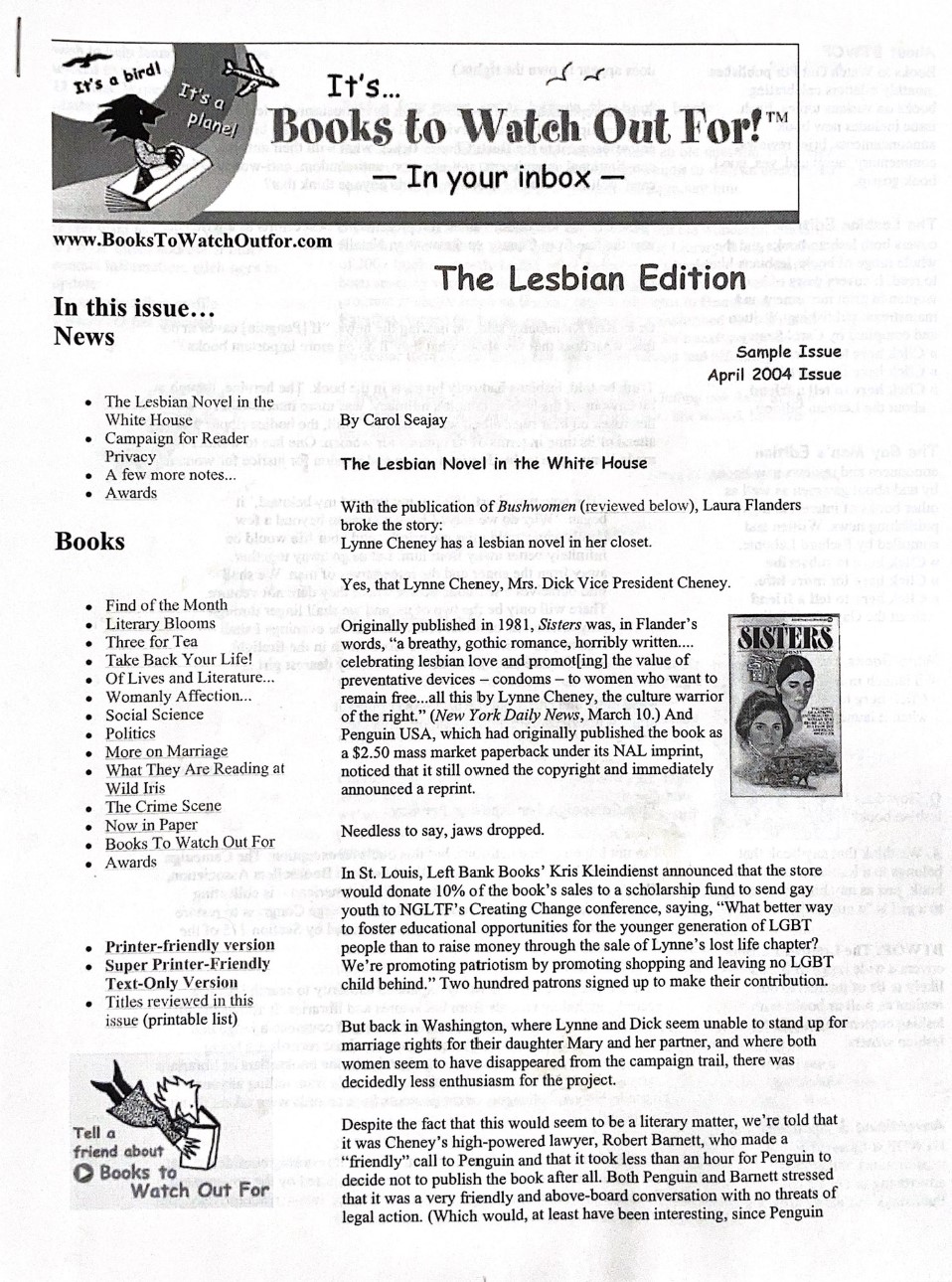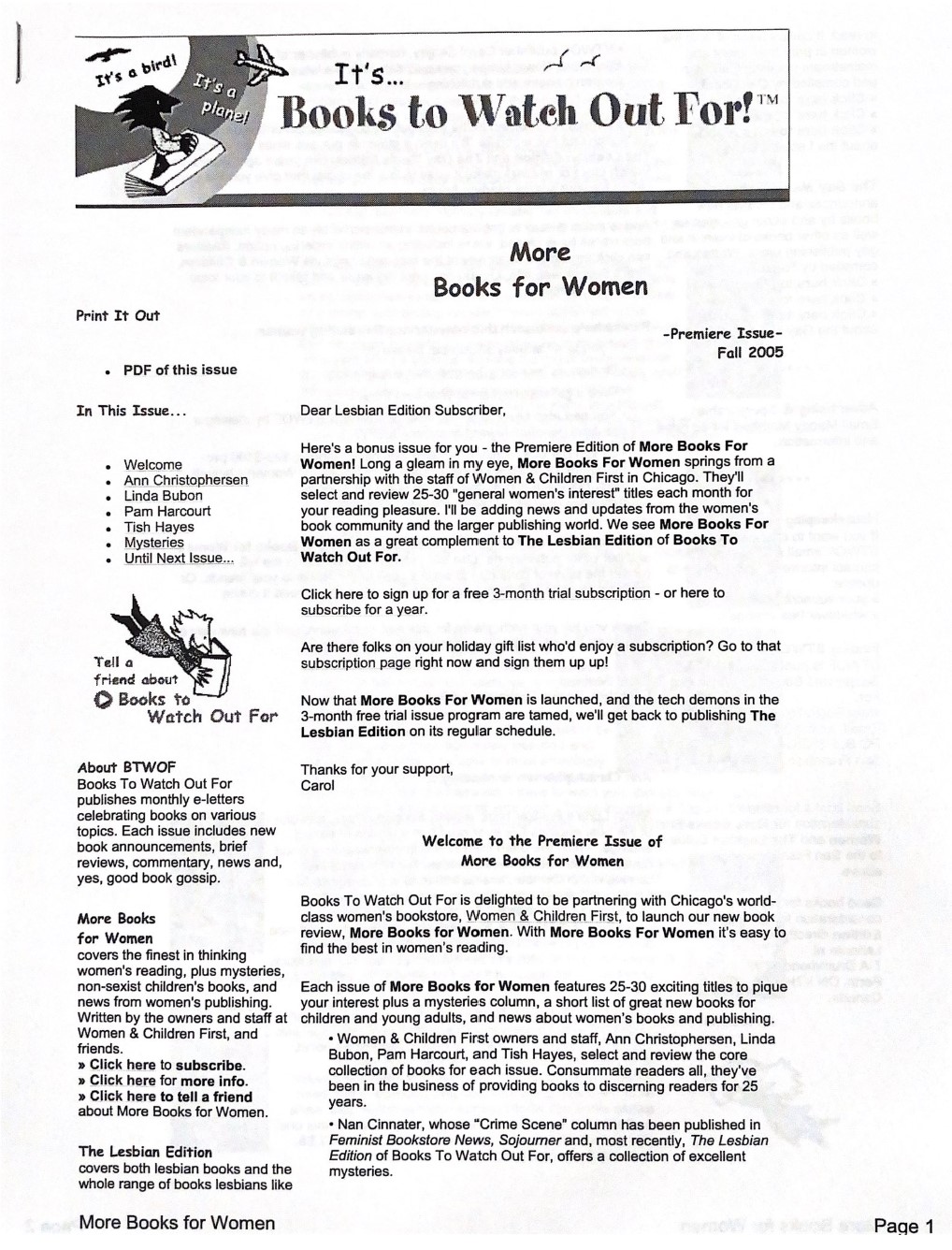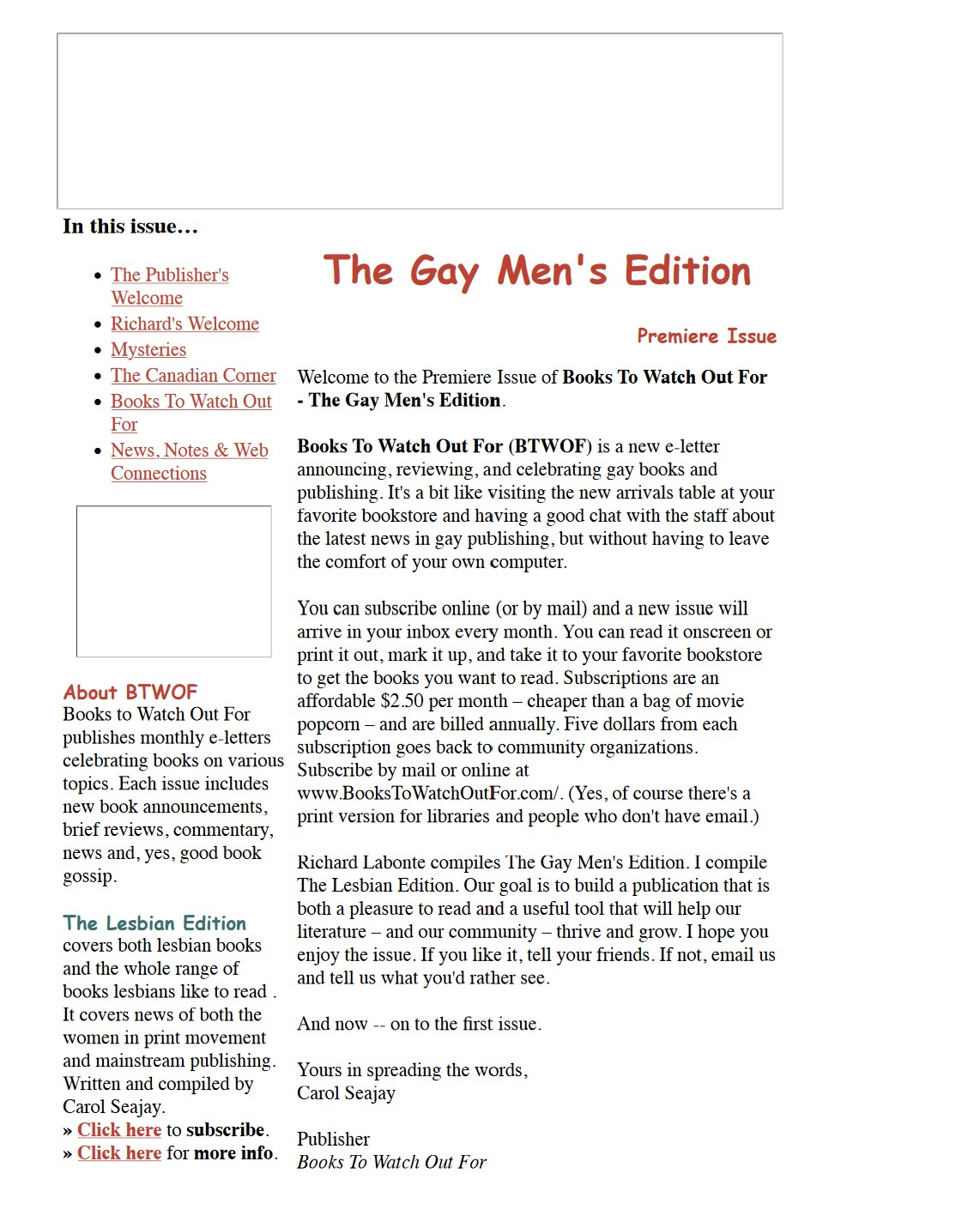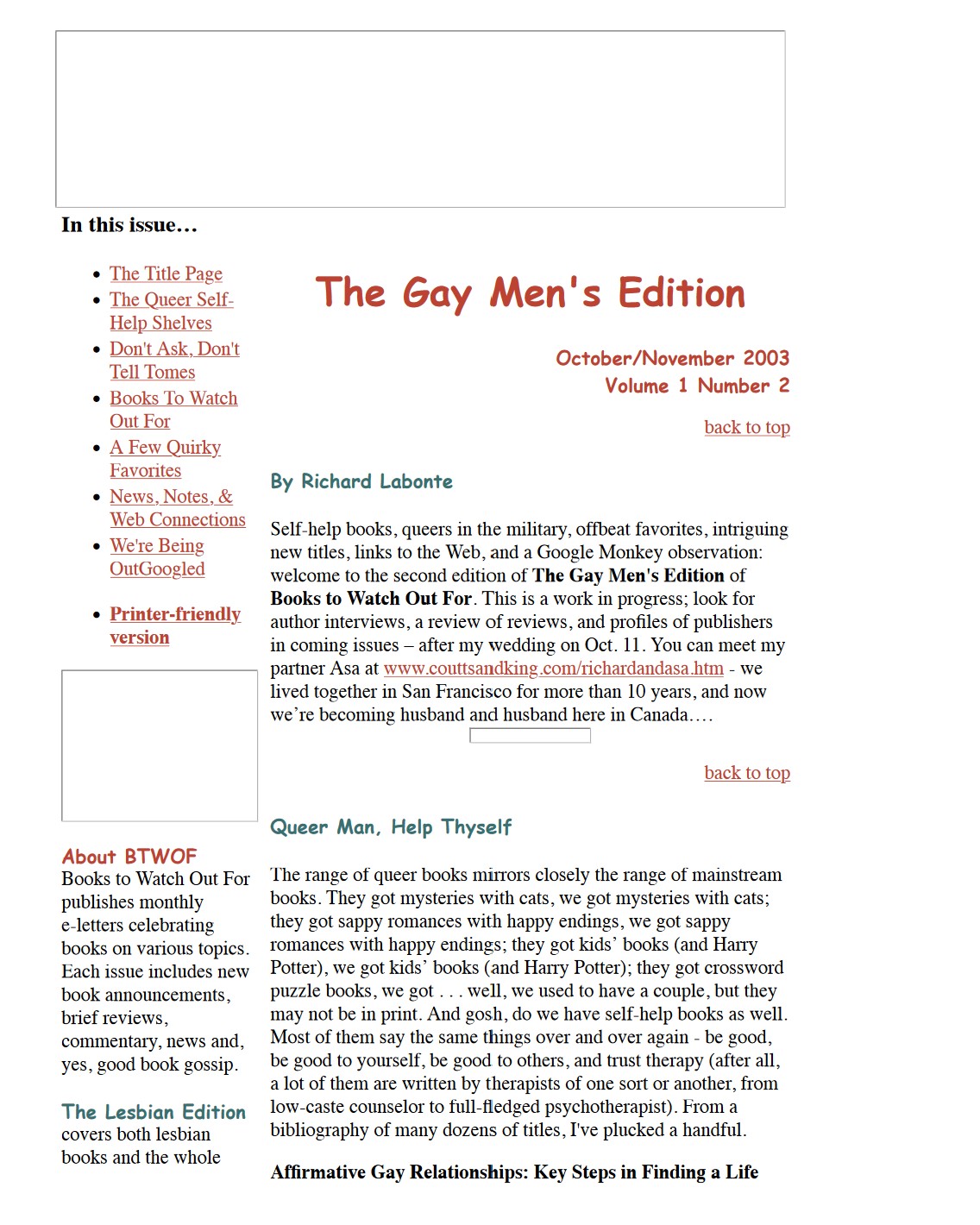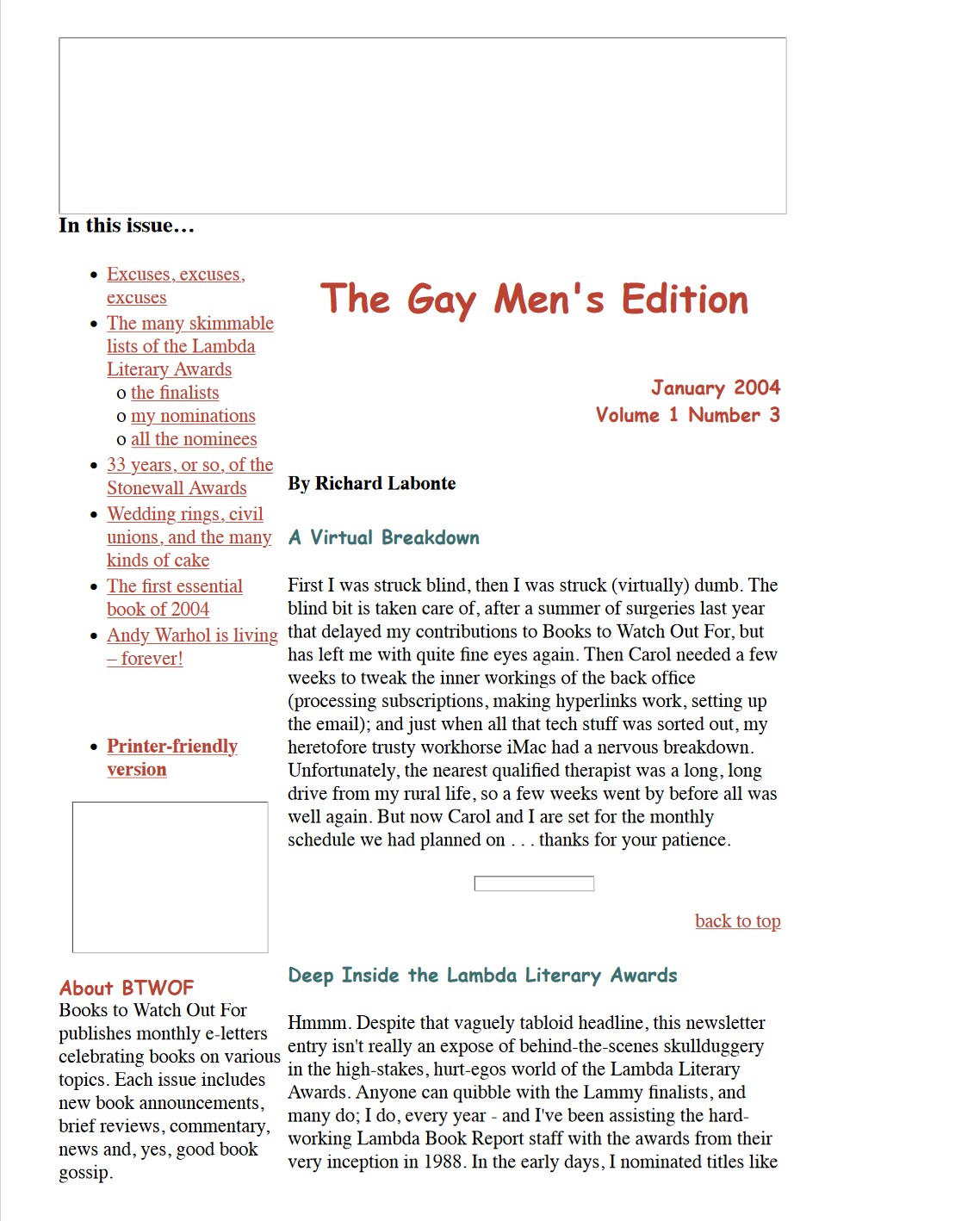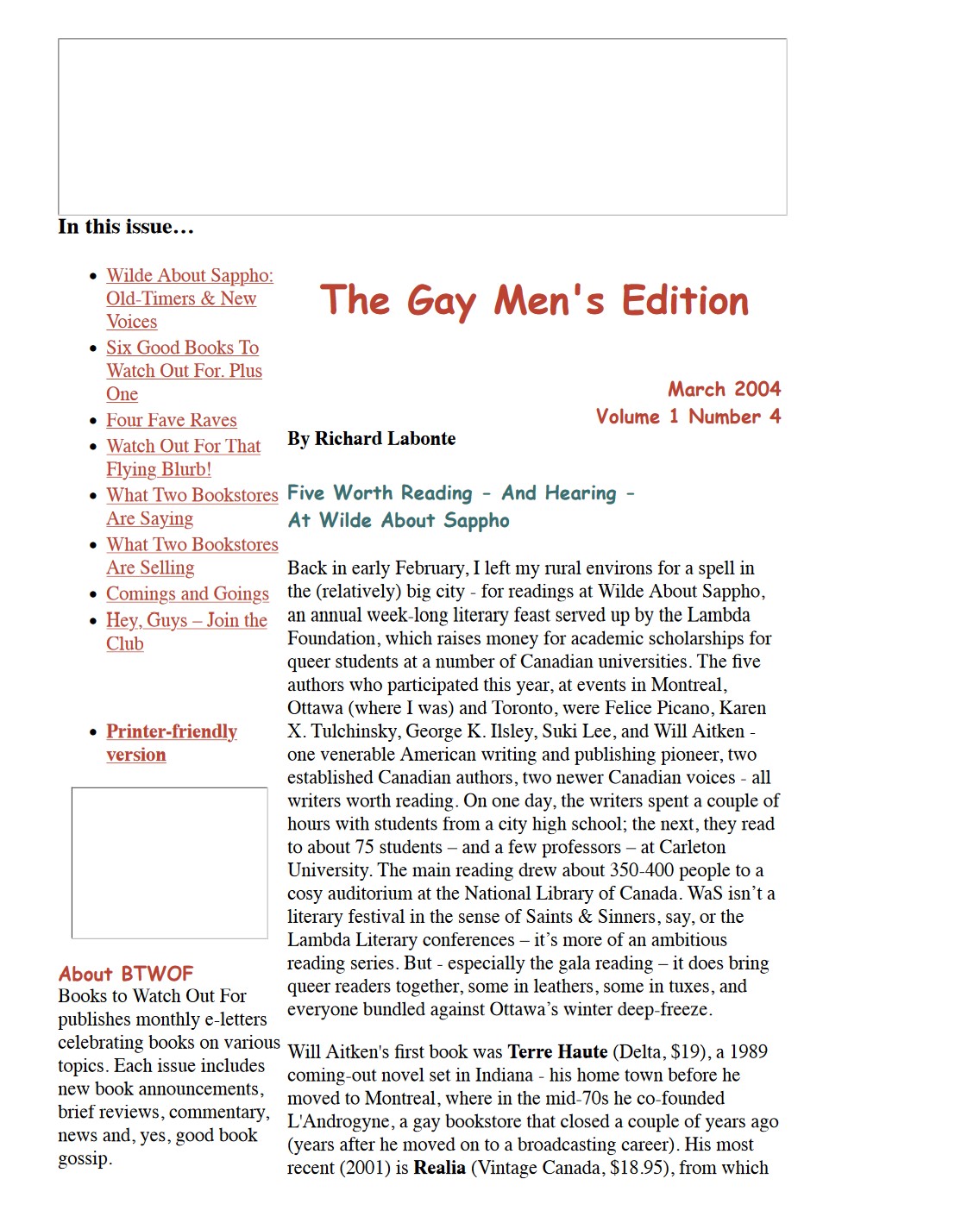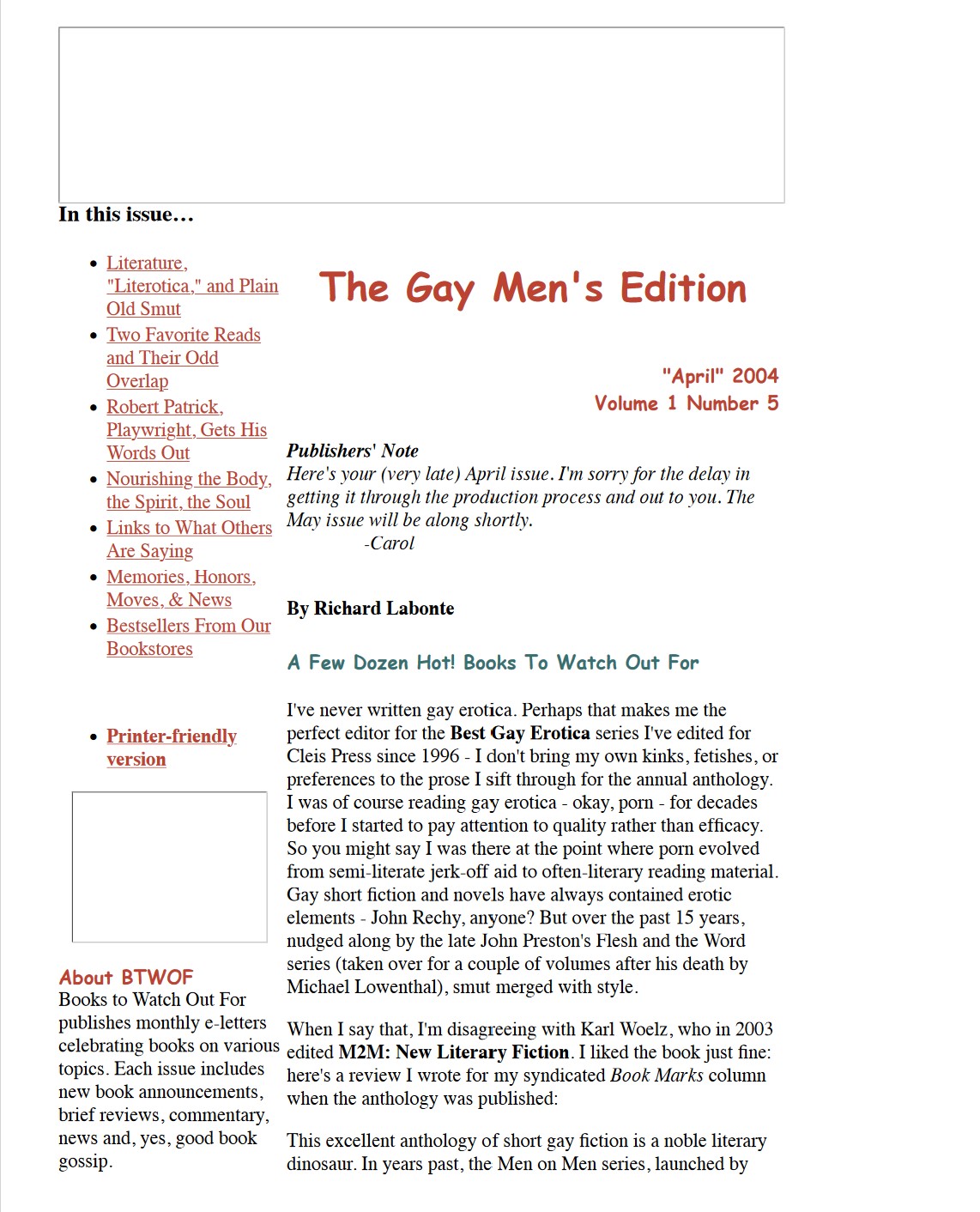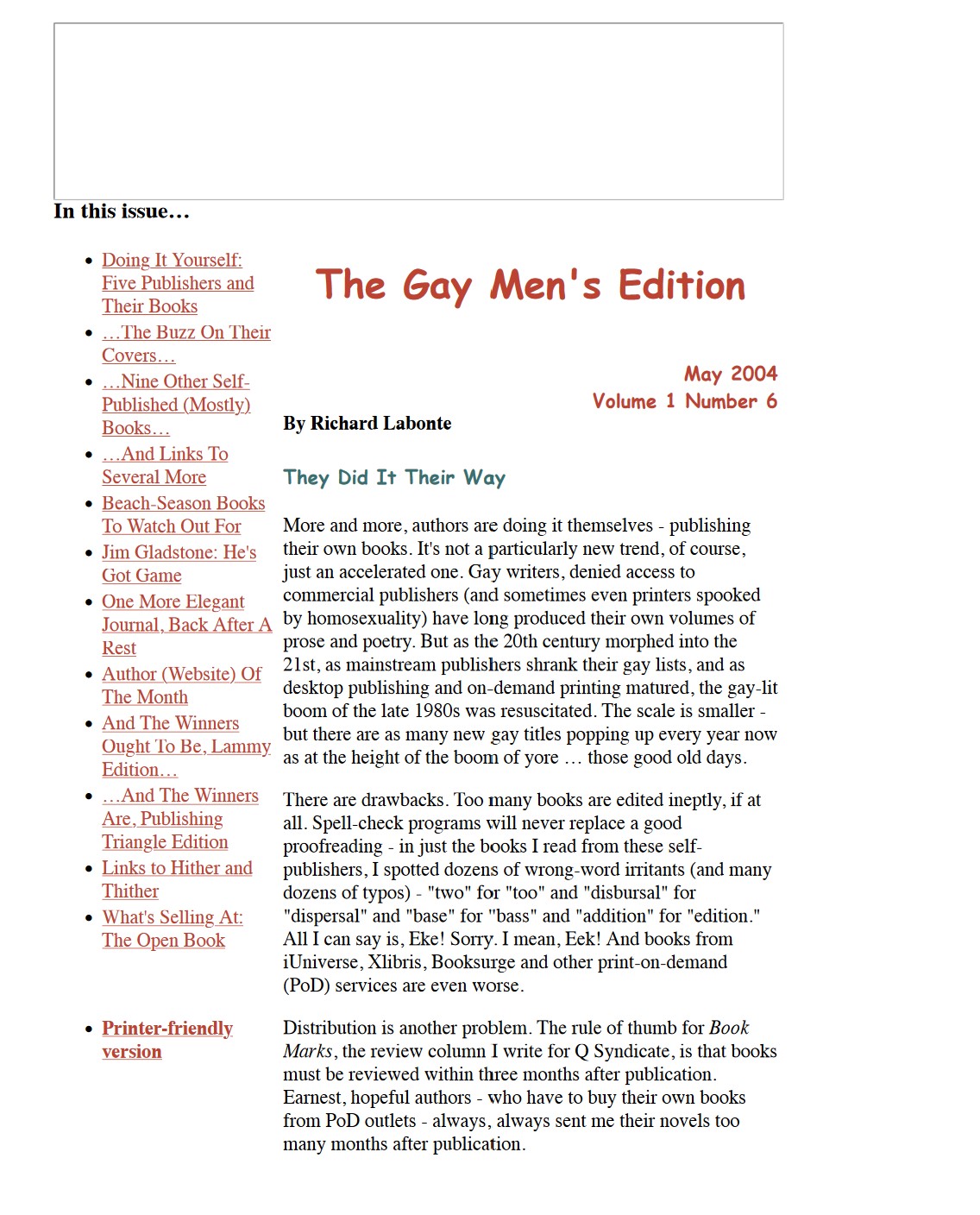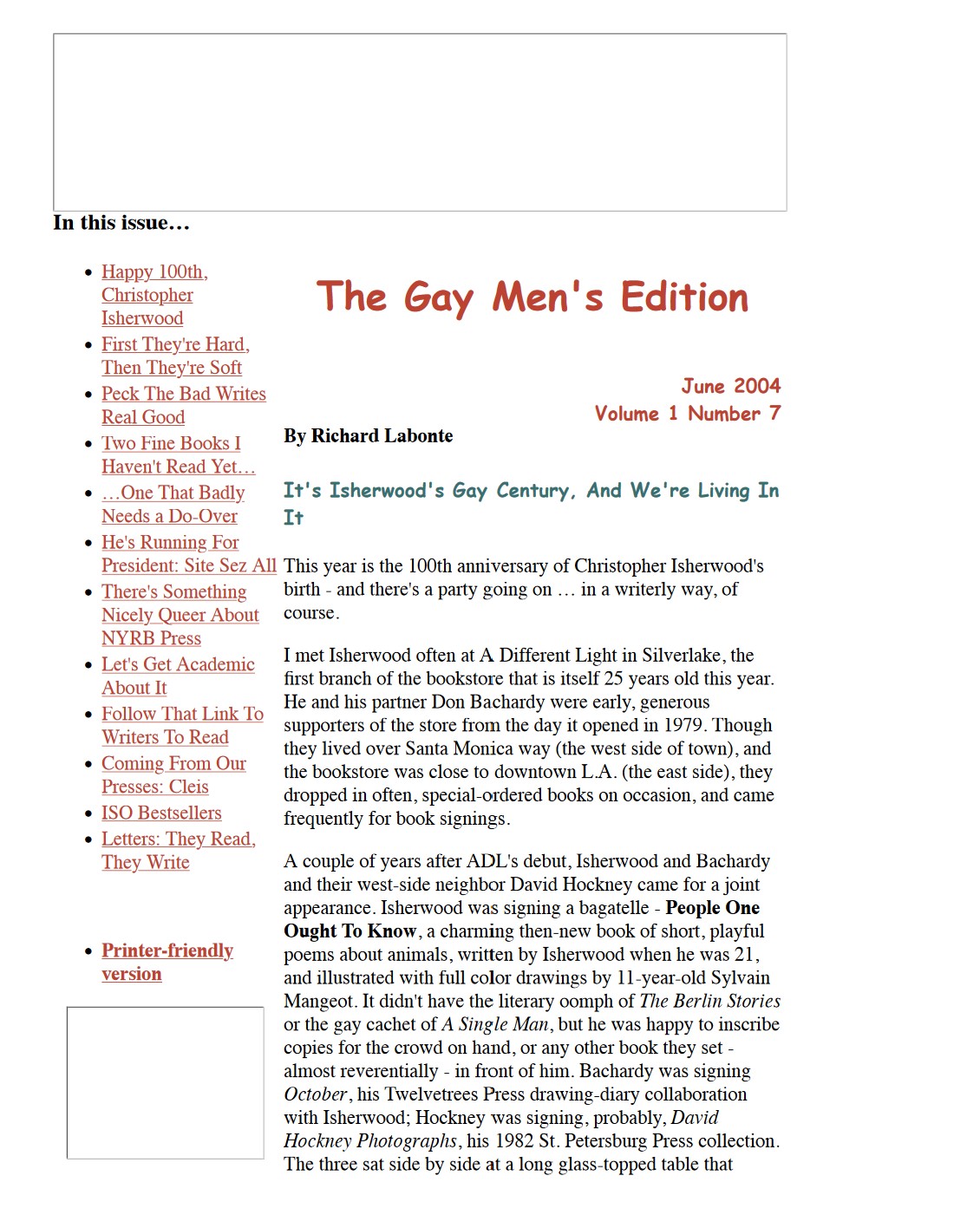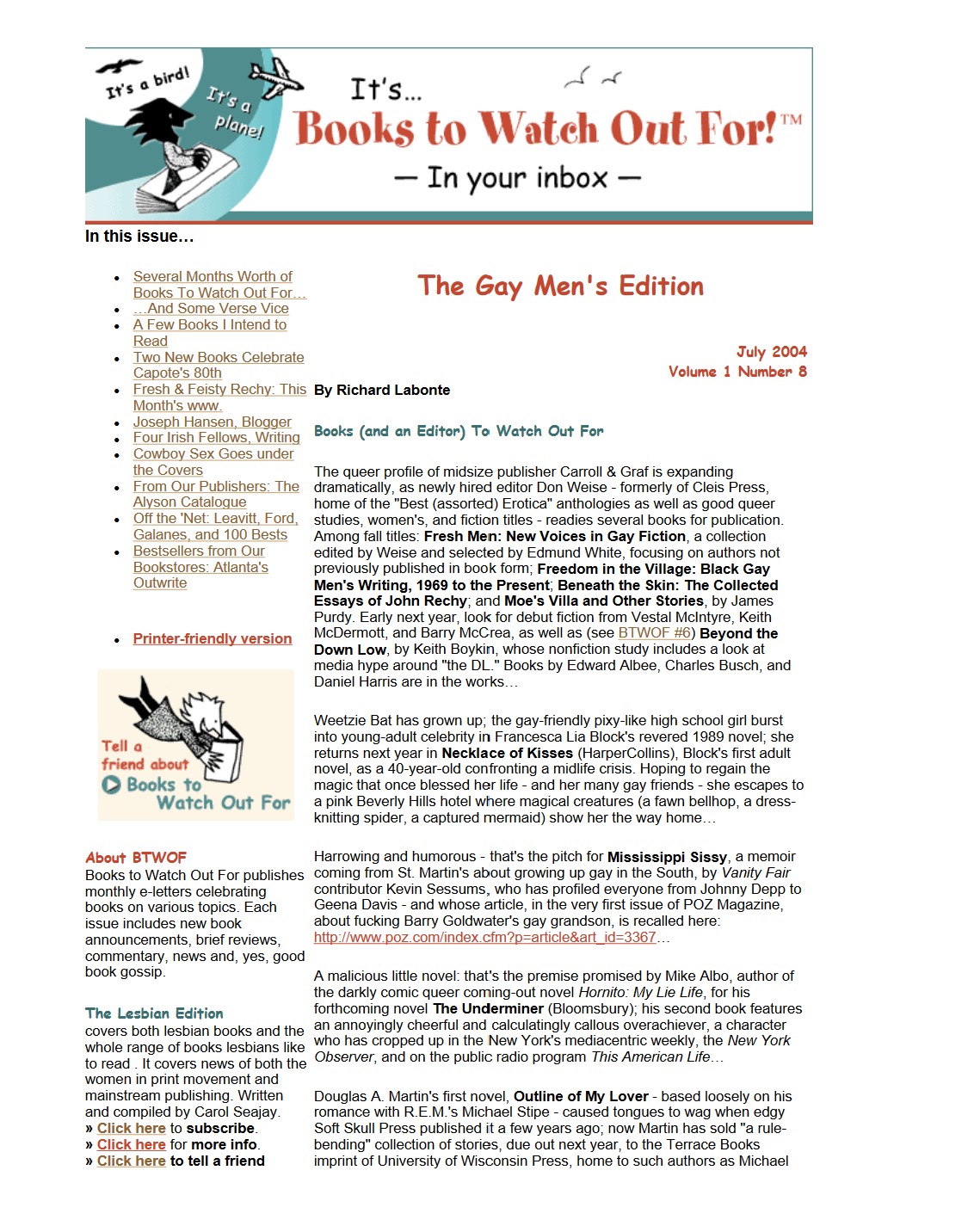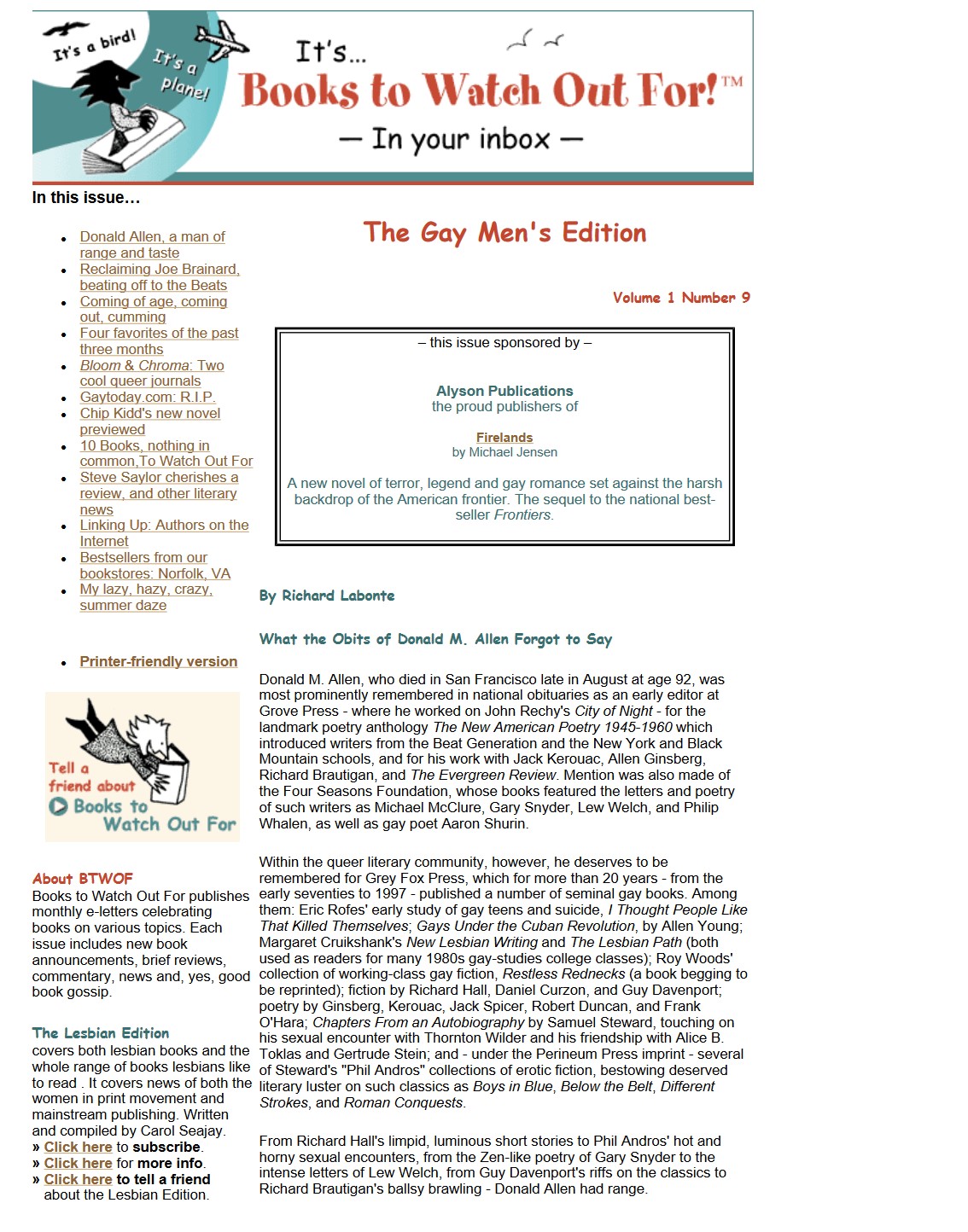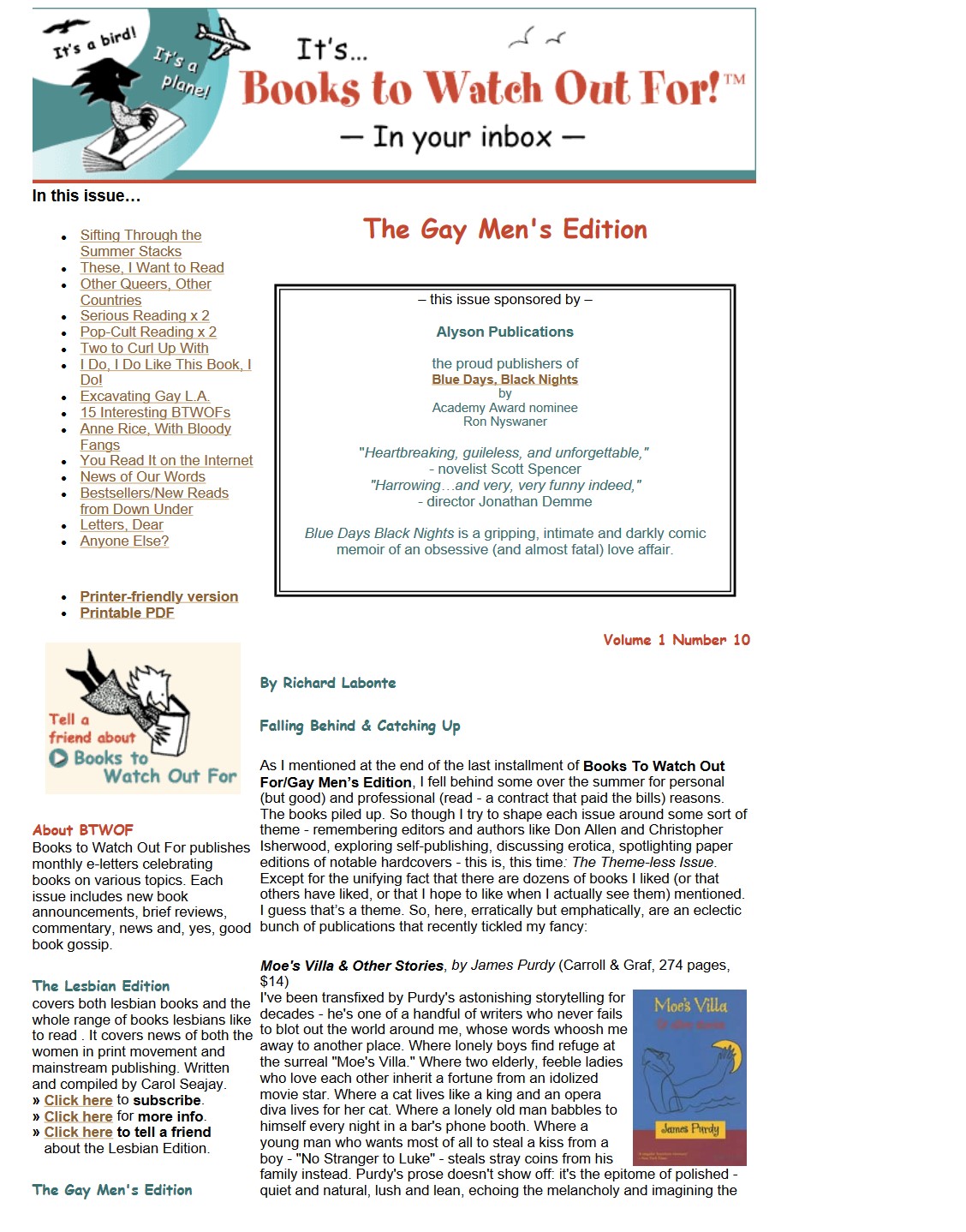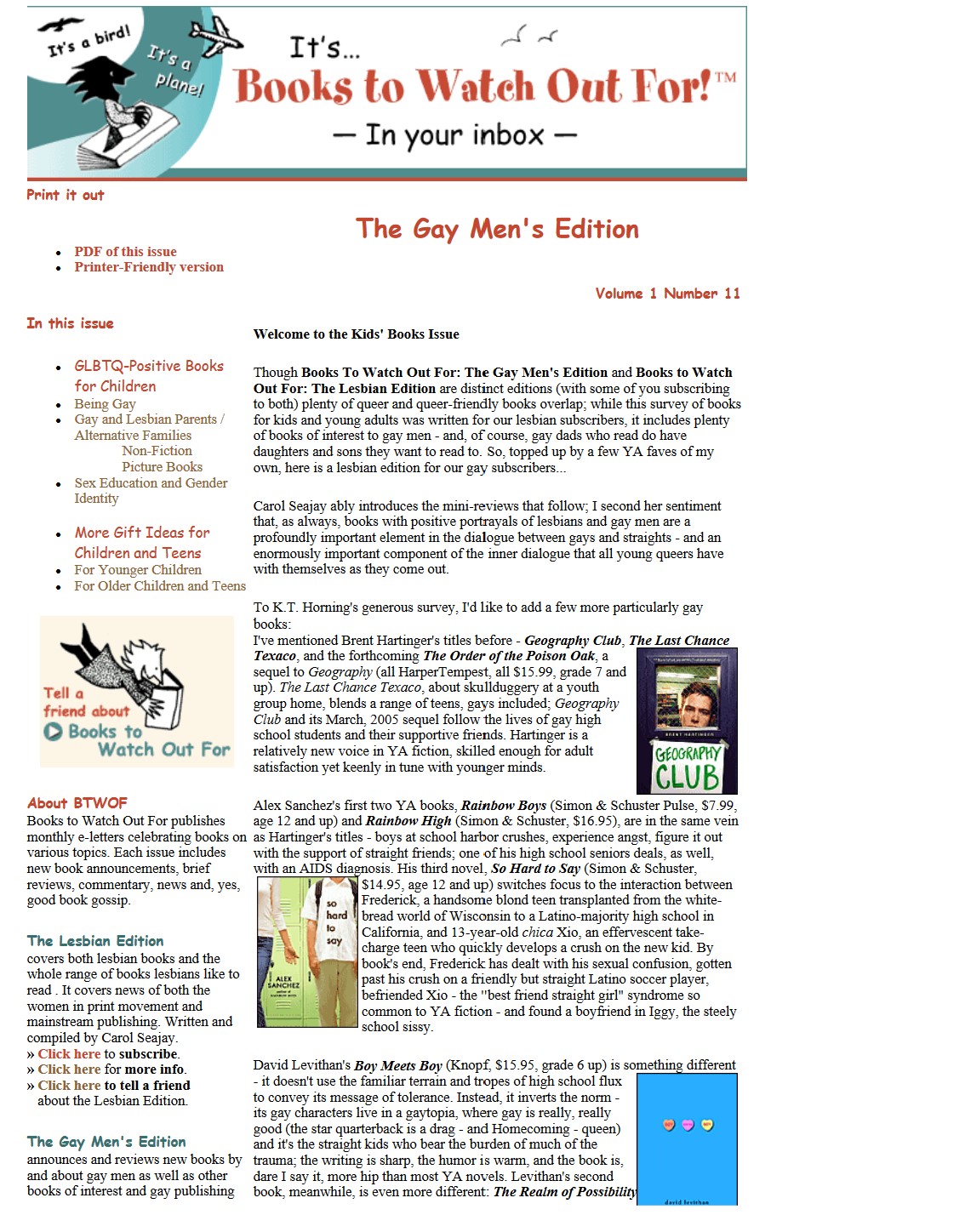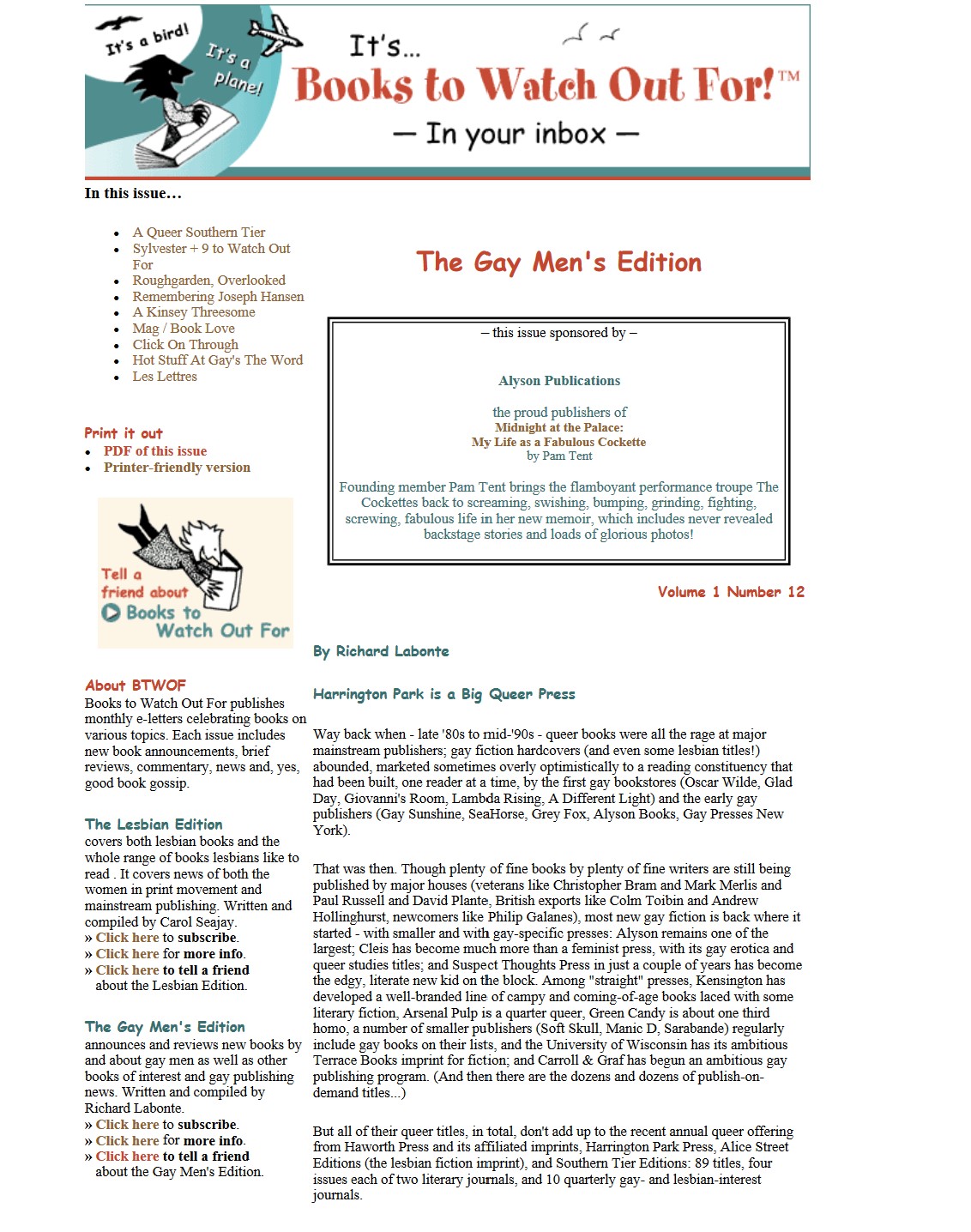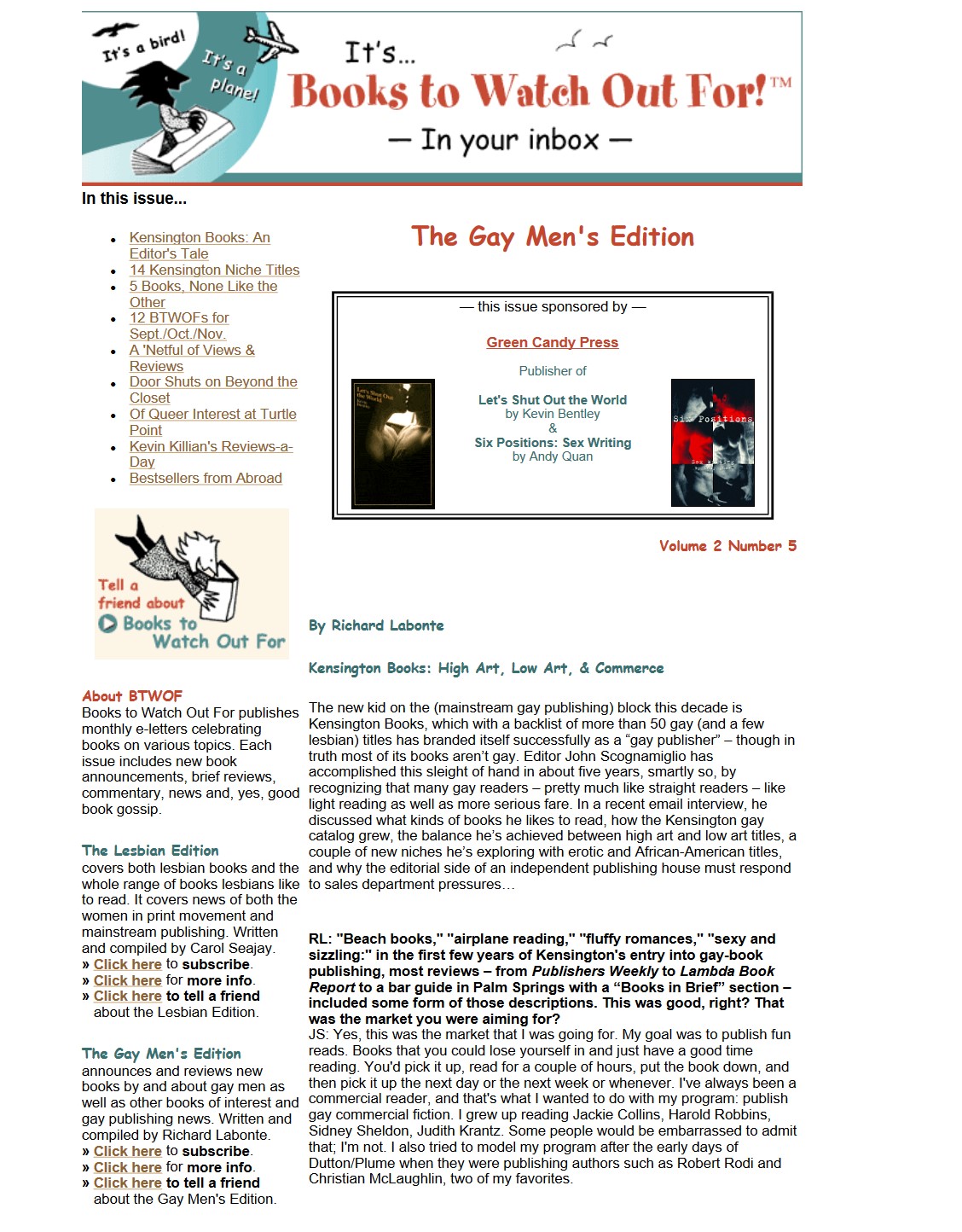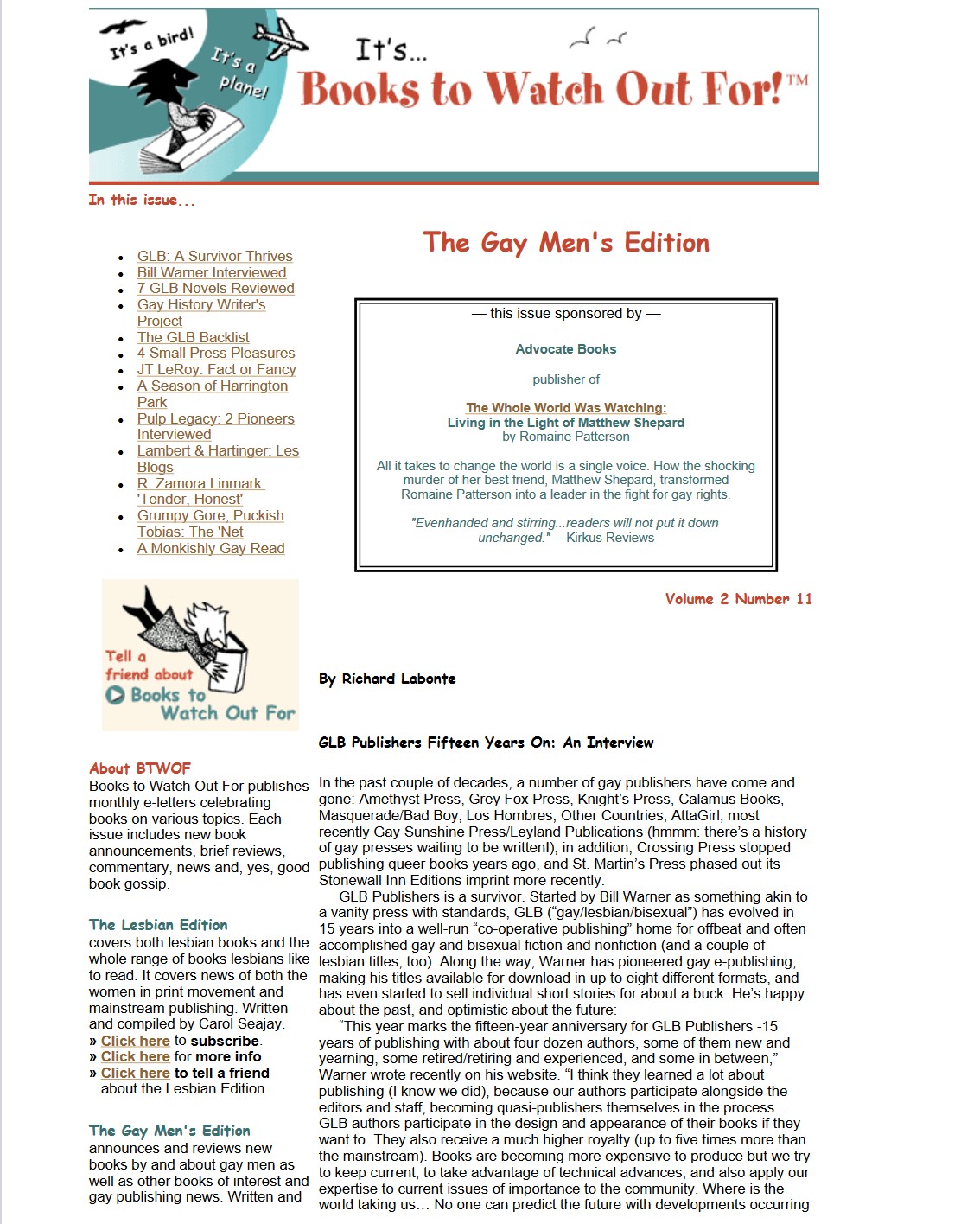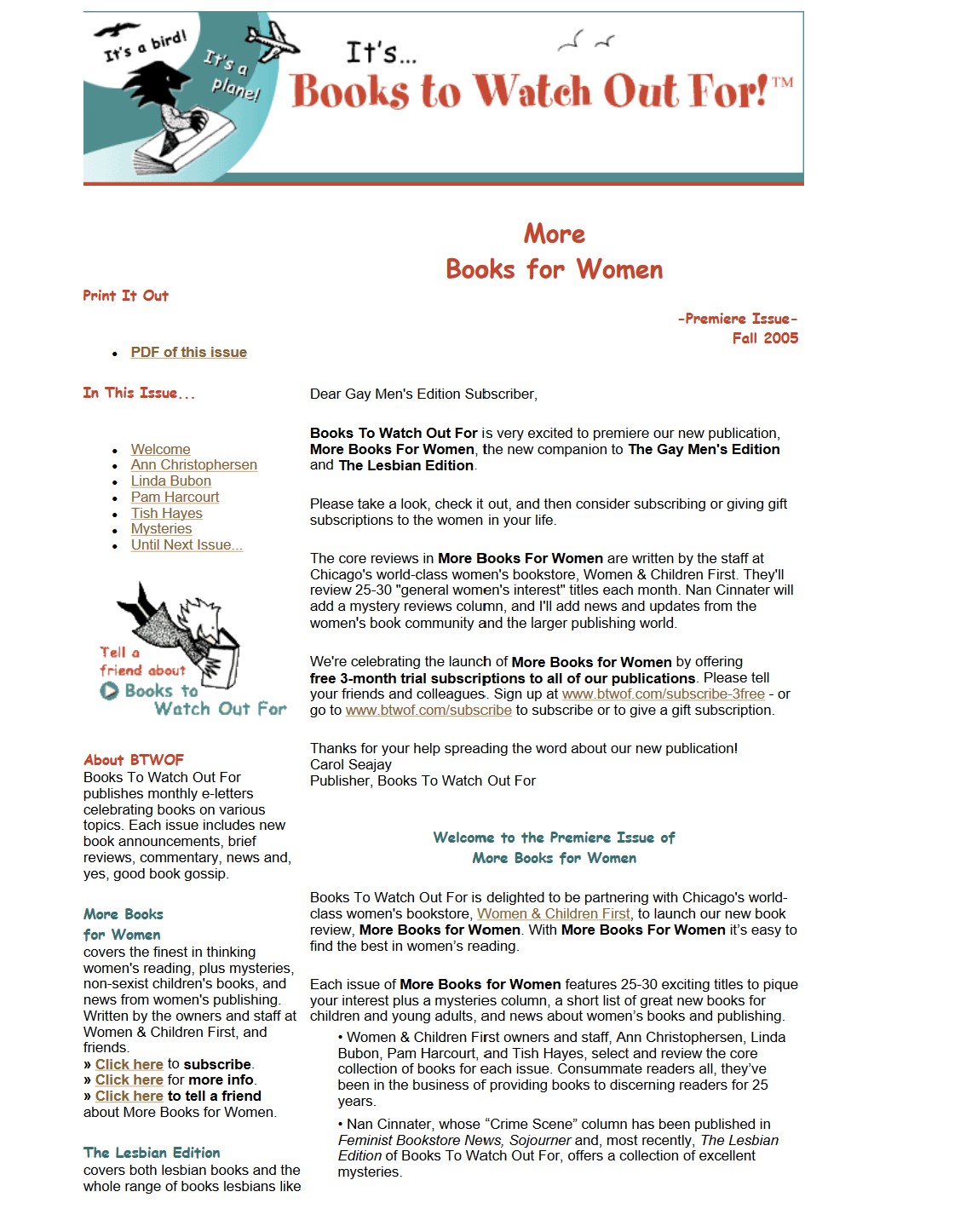Books To Watch Out For
WHY are there three versions of each issue of Books To Watch Out For?
In early 2000 as Feminist Bookstore News (FBN) was beginning its twenty-fourth year, Carol Seajay, the mastermind behind FBN and the driving force throughout its lifespan, was alternately contemplating and ignoring the writing on the wall about the impact of the dramatic changes in the worlds of bookselling, the entire book publishing industry, and consumer commerce in general on FBN’s financial future. The writing on the wall was not hopeful and so she was also contemplating what might come next for her. A woman has to support herself, after all, and that meant finding new work and maybe a new direction after twenty-five years of movement work at movement wages in feminist bookselling and writing and publishing and networking about feminist bookstores.
The answer to that was also in the writing on the wall. San Francisco, California, and, it seemed, the entire world was being swept up and changed by the dot com explosion. That’s where the jobs were, jobs with generous salaries and benefits (paid health insurance! 401k plans!), jobs that offered challenges in a new direction, a chance to pay off FBN’s debts and to set aside money for an old age that loomed in an increasingly close future. The ex-girlfriend of the dyke next door scored a place in a three-month training program designed to bring women and people of color into the dot com job stream. When the font of the writing on the wall expanded to the point where it could no longer be ignored, Seajay applied for the training program and was accepted.
Thus began a three-year round of training programs, jobs followed by lay-offs, followed by more training programs: HTML and web site design supplemented by PHP, SQL, online data-base design and management, technical writing classes, and lots of certificates. Then, the dot com bomb. In 2003, Seajay had to ask who would hire her—a fifty-year-old dyke with beginner-level skills and an activist history—in the midst of the biggest recession since World War II.
The answer came: she would. She would, once again, hire herself and use her new tech skills to retool her FBN skills and connections to create a new publication, a reader-oriented online book review magazine, Books To Watch Out For (BTWOF), that would bring the news about new lesbian and gay and feminist books directly to readers, especially those readers who were left bereft when their local feminist and gay bookstores had closed. And so BTWOF was launched.
The BTWOF umbrella hosted three distinct editions:
• The Lesbian Edition,
• The Gay Men’s Edition, which Richard Labonté agreed to write
• More Books for Women, which focused feminist-but-not-specifically-lesbian books
Carol Seajay notes of Richard Labonté: I loved his love of gay lit: men’s, women’s, everything in between and on both extremes. He knew so much, and reviewed so generously and kindly, and like me, sustained his community on what we both called “bookseller’s reviews:” the idea being that “best” wasn’t a useful concept, that dividing books into “literary” and “less than literary” and five-star and three-star rankings were not useful. The point, our purpose as booksellers, was to connect whoever walked into the store with the book that was right for them at that exact moment in their life. To hand them what they wanted and needed. If that was great literary fiction, great. If it was “trash,” that was perfect too. Our community was sustained by books. I also hoped that having Richard’s writing and reviews and insights would garner more attention and advertising for BTWOF. And it did. Richard generously reviewed everything. And all the queer writers, men and women, basked in the way he saw and honored their work.
In addition, given the technology of the time, there were also three versions of every issue of all three editions.
The first version was built in HTML and was sent to all the email subscribers.
The second version was for people with AOL email addresses. AOL had a lot of filters designed to screen out anything any of their users might consider offensive. So we had to do a lot of special additional coding and formatting to get BTWOF issues through AOL’s screens and to work around other AOL quirks.
The third version was printed on paper and sent through the mail to subscribers who didn’t have access to computers or email addresses.
It was a PDF of the HTML version.
Carol notes, This was a time when some people had access to computers and computer training but many didn’t. Email wasn’t yet ubiquitous. But many people who didn’t have computers or email access cared deeply about lesbian and gay and feminist books. And I wasn’t willing to exclude any of them. So, in addition to doing the flashy computer-based, “high tech” versions we did a PDF version that we then photocopied and sent via snail-mail to those readers.
These three versions ensured accessibility so that lesbians and gay men who didn’t have access to learning computers and/or who couldn’t afford to buy one were not excluded from news and information about lesbian, feminist, and queer literature.
Carol reflects, In hindsight it’s easy to see that BTWOF might have survived longer if we/I had only done one version. But postage and printing would have killed it if we did only a paper version. And we couldn’t leave the non-tech lesbians and feminists and gay men behind. Transition times are difficult. And expensive, even when they supposedly save money.
